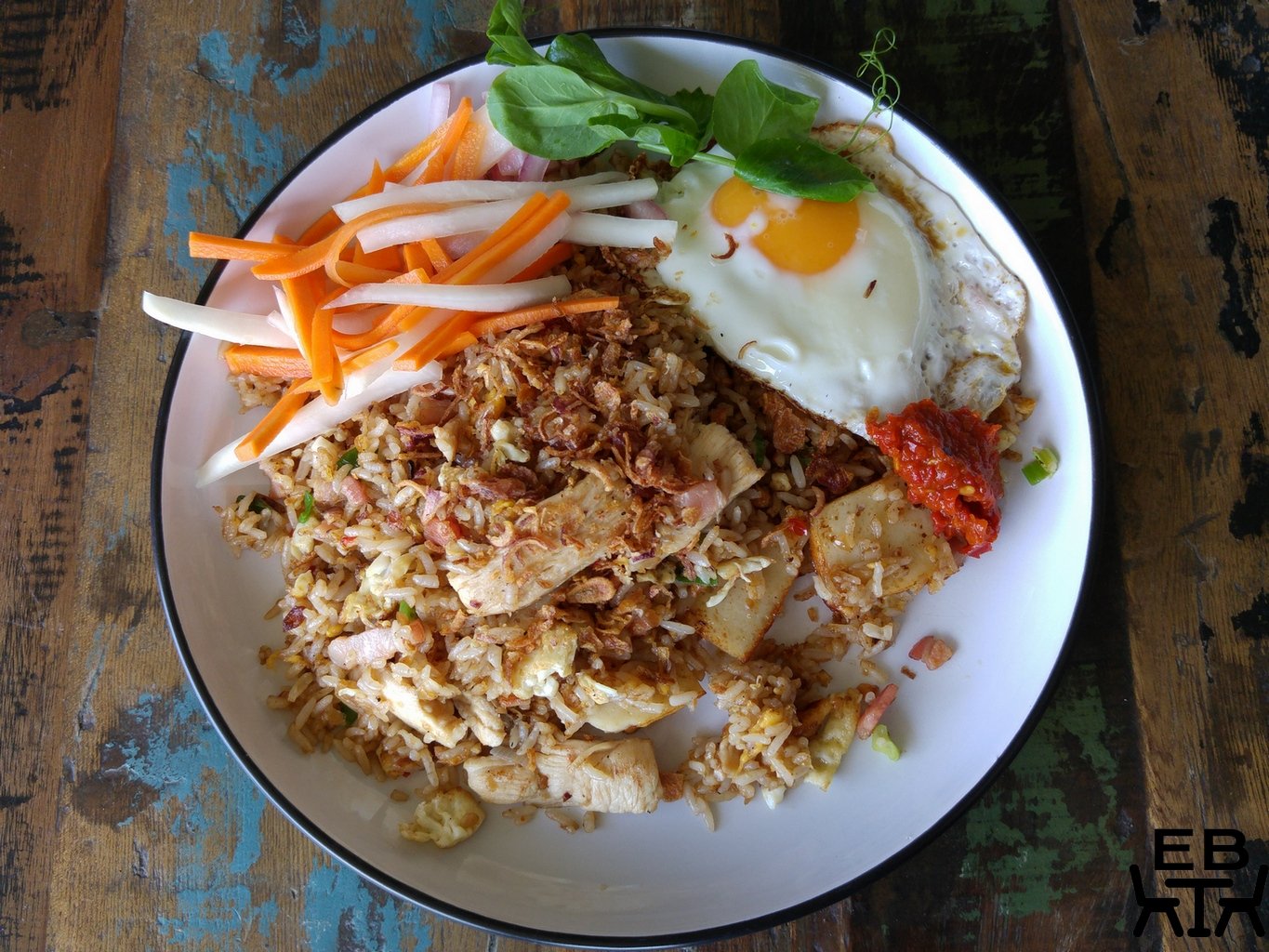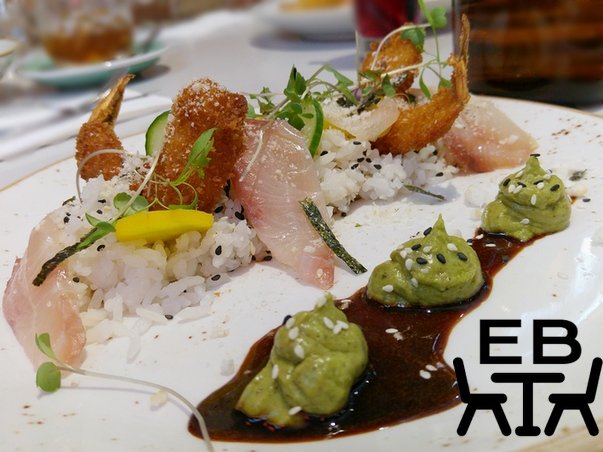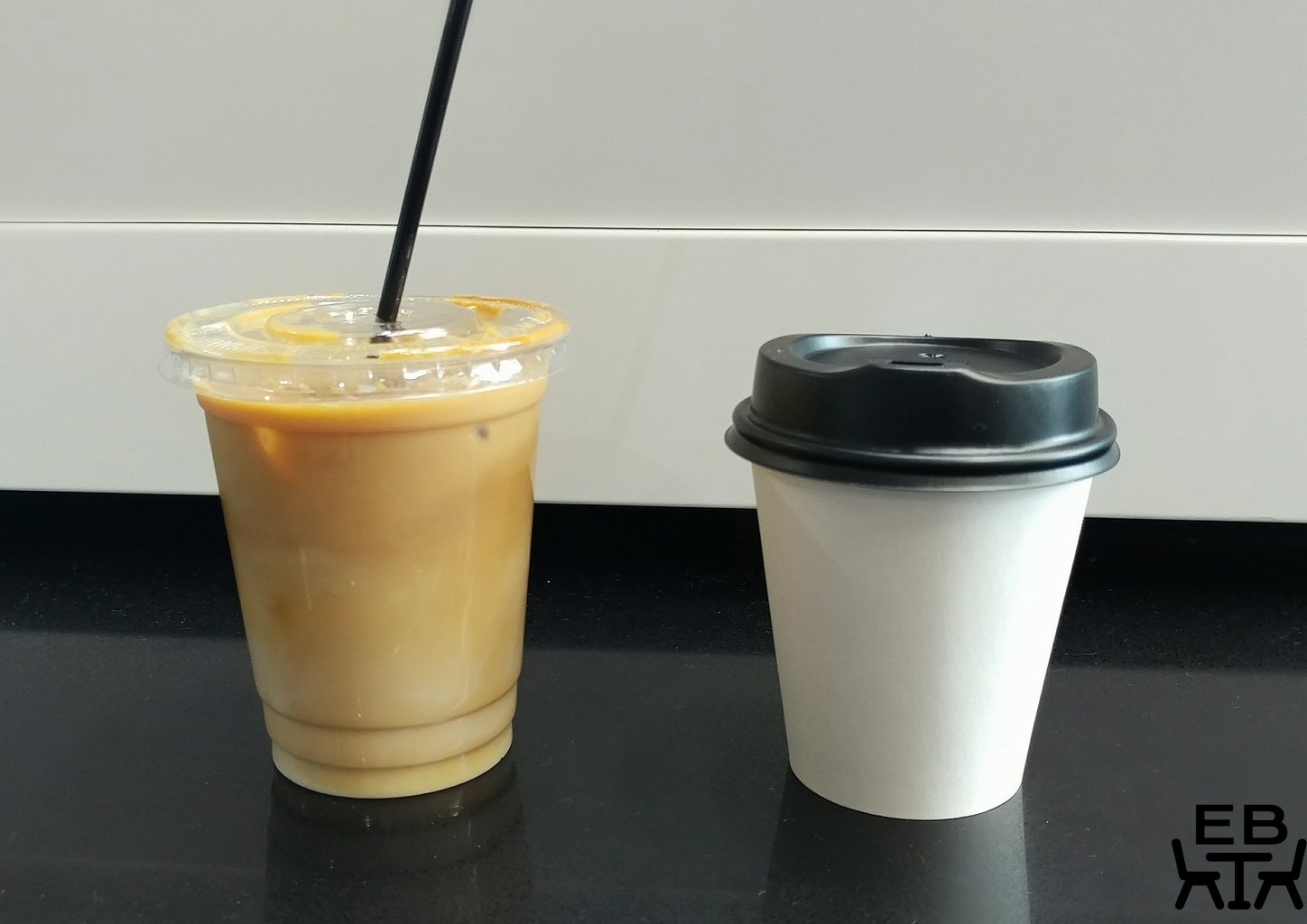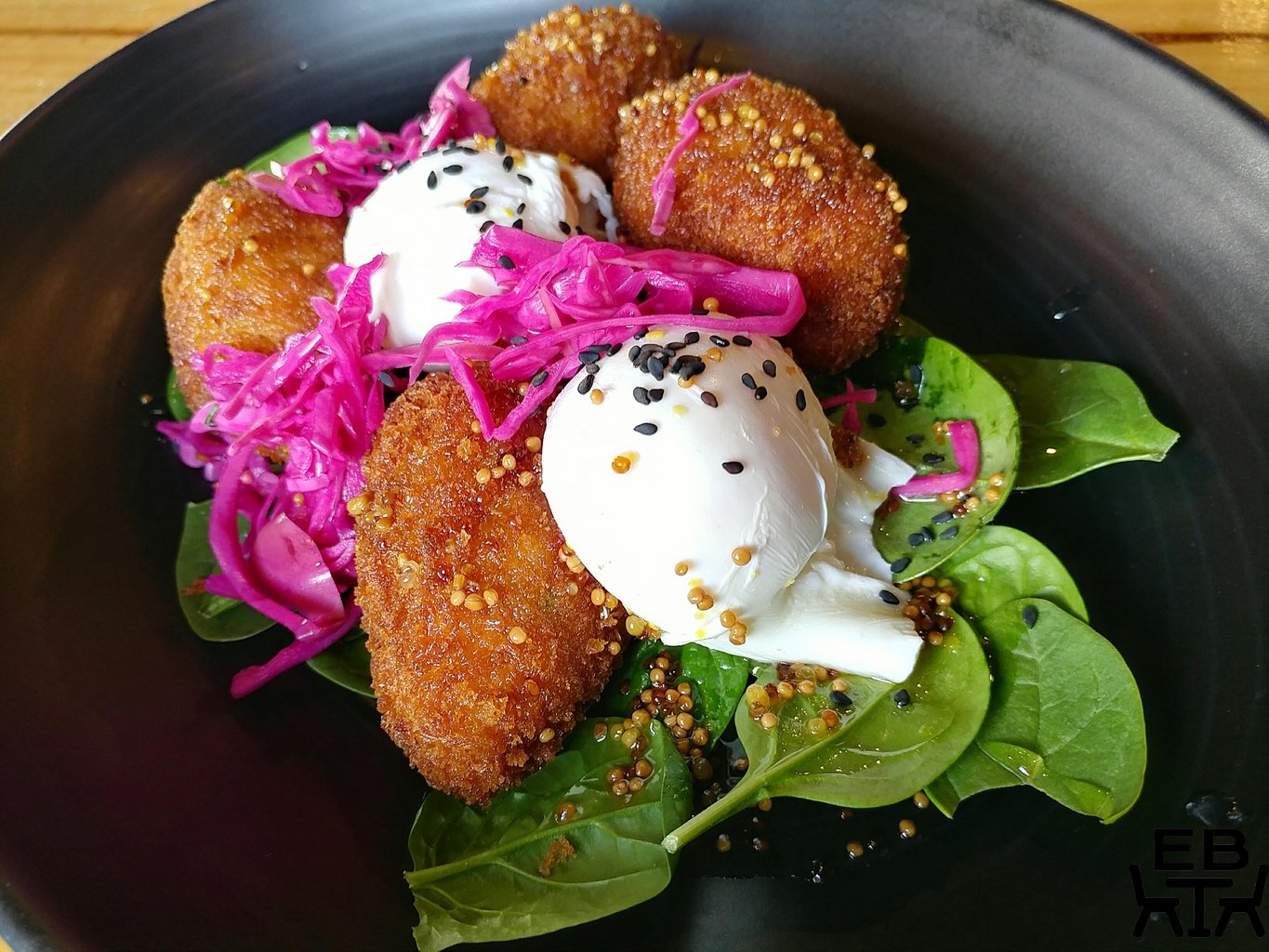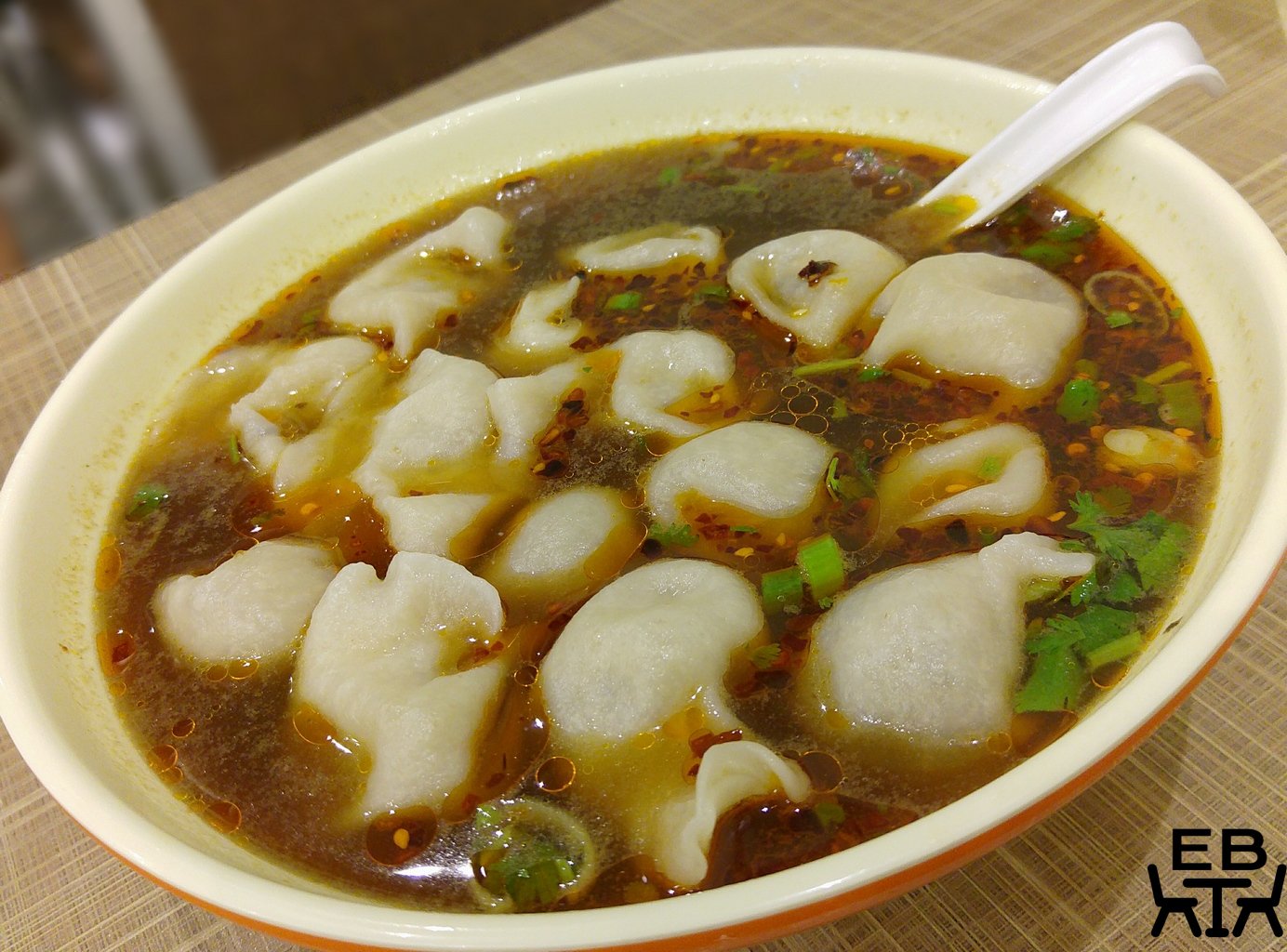Last updated on January 15, 2024
We were thrilled to discover an article that said that one of the cheapest three-star Michelin restaurants in the world was in Hiroshima. We happened to be going to Hiroshima, and decided that Nakashima had to be part of our trip plan. We made a reservation online a few weeks beforehand (they only open up bookings a few weeks ahead, so we had to keep checking back), and it was relatively straightforward. They only do a dinner service, so there were limited options.
It was a little disappointing to subsequently discover that although that article was from 2022, the information was outdated. Nakashima had three Michelin stars for a number of years, but not since 2018. Many more current pieces on the internet still refer to it as three star, however, and it took some delving to discover otherwise. Still, we figured that the experience would be an interesting one – when else would we be dining at a close to three Michelin star place?
With the aid of Google maps navigation, we made our way there via a combination of train and foot. The restaurant is located in the middle of a residential area, and is on the ground floor level of a building at a street corner. The LED light outlining it helped it stand out from its surrounds at night, even if you had to get close to actually be able to see the restaurant name.
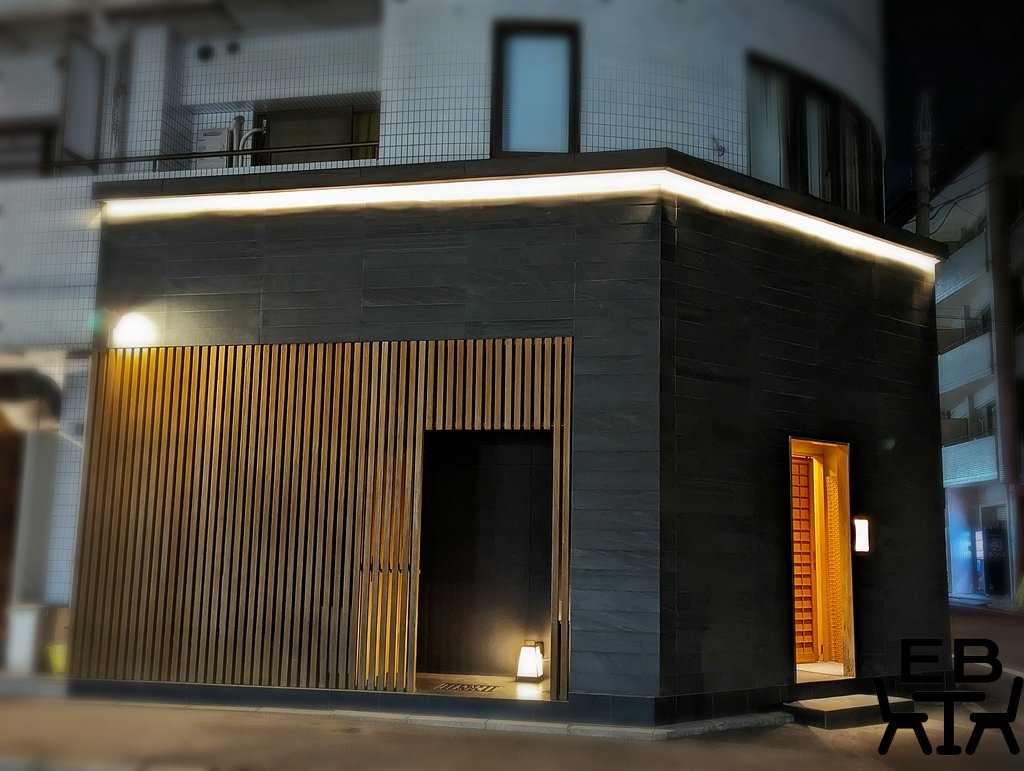
It was a little mysterious, the wooden door behind the doorway hiding everything from view, until you dared to slide it open and peer inside. The interior was a different world from the night outside, warmly lit to brighter than mood lighting. Light wood panelled walls and the shoji screen look behind the counter gave it a traditional feel. We didn’t take photos of the inside, as other writeups had indicated that the restaurant owners only permitted pictures of the food.
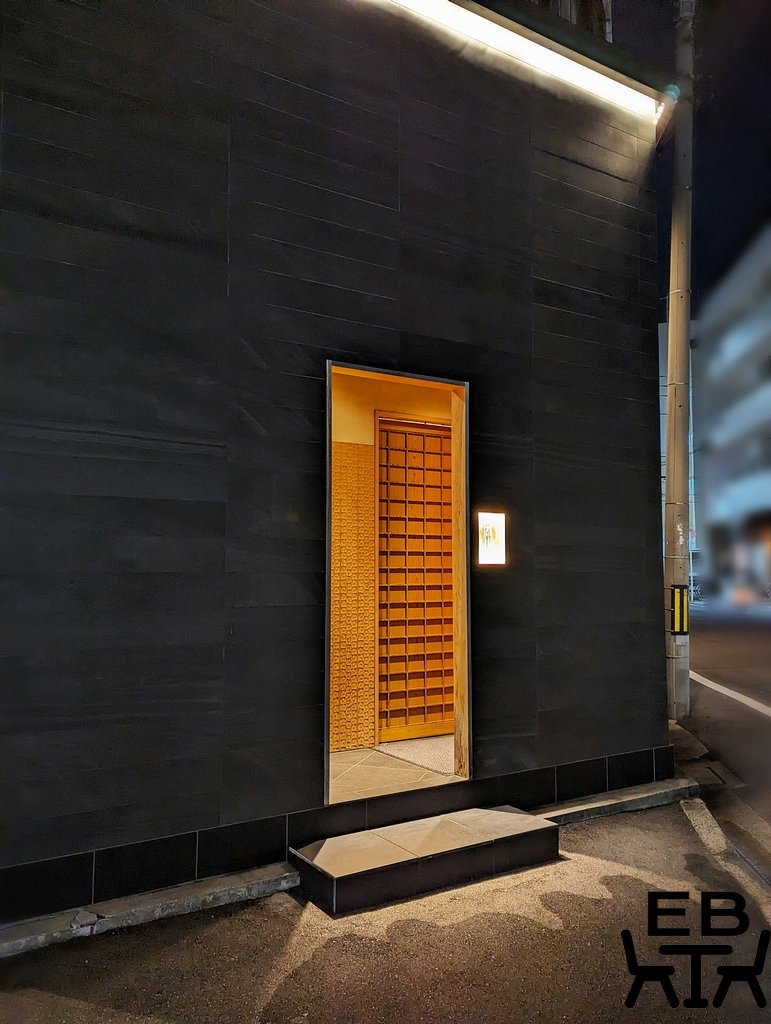

A number of other patrons were already seated along the counter. We were shown to our seats, at a separate table. We did think, as the dinner progressed, that sitting at the counter would have been more interesting. Although staff did tell us that they didn’t speak much English, we overheard some of the descriptions and explanations of dishes given to a couple of other diners at the counter who were also English-speaking, and they were in more detail than what we received. There were also Japanese-speaking diners there, and they, of course, were told even more.

The menu gave us indications of the courses to come, with a little more detail than some modern menus that list only ingredients, but still didn’t give too much away. It being a kaiseki diner, there weren’t course options, you would get what the chef had determined.

We ordered a Yuzu and citrus juice to start, which arrived chilled, with very cubical ice cubes. The ice cubes you get with your drinks at most restaurants are sort of cubical, as in, they have rounded edges, so they are more like spherocubes. These, instead, had crisper edges, like the 3D forms you doodle in a sketchbook. Did it make a difference to how it melted? Possibly not. But it was more aesthetically pleasing. The juice had good strength of refreshing yuzu flavour, and was not excessively sweetened.
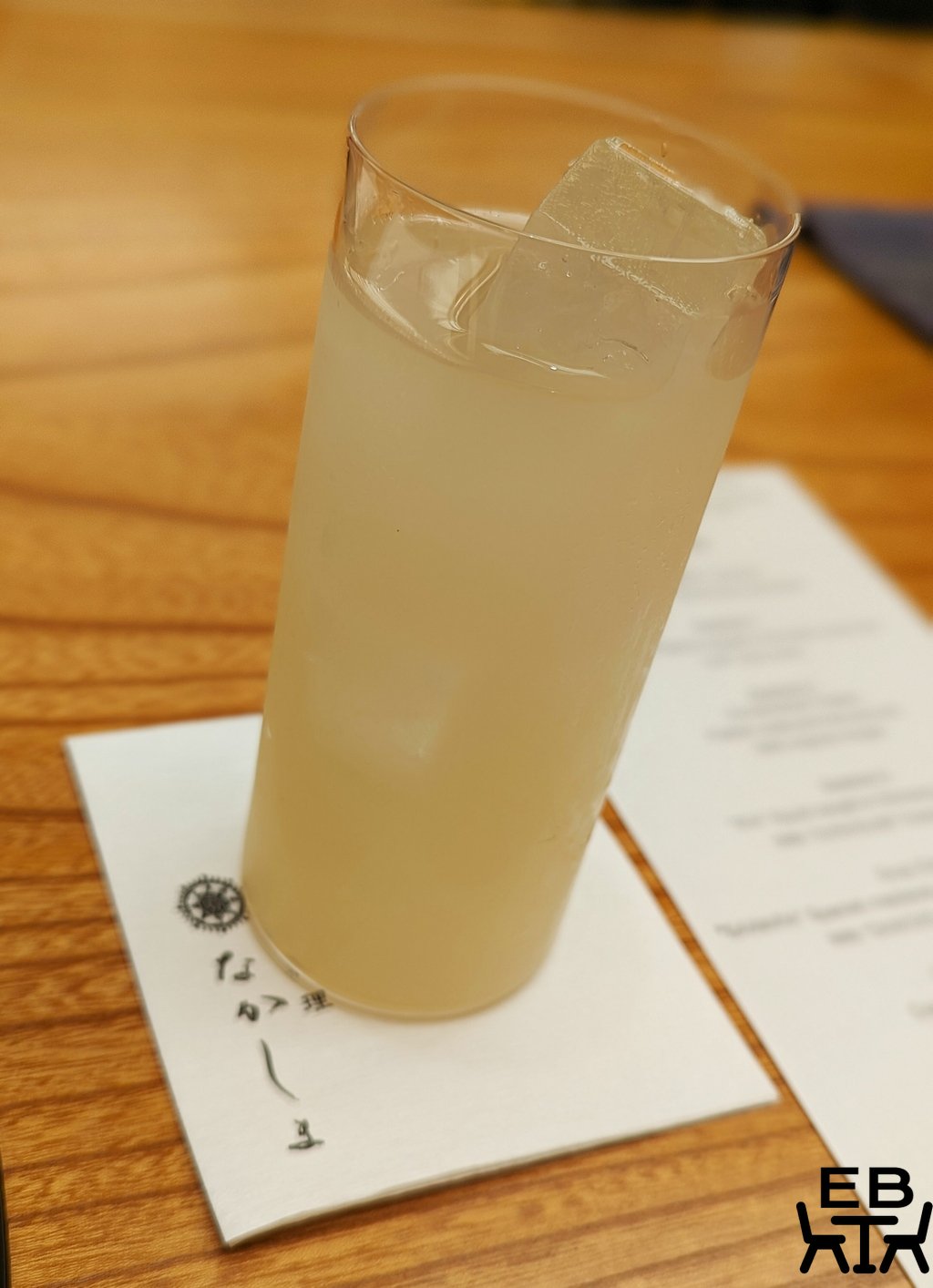
“Dobinmush” (Dashi). Matsutake mushroom and fishes.
At the top of the menu, they had written that the menu would feature dashi, a basic of Japanese cuisine. We had not encountered dobin mushi before this, but it is a Japanese dish in which mushrooms, fish, and vegetables are placed in a teapot with broth and steamed – not boiled. The dobin mushi was served in a beautiful green teapot with a matching bowl over it, and a wedge of citrus on a separate dish. We were told to drink some of the broth first, then add a few drops of the citrus before drinking more.
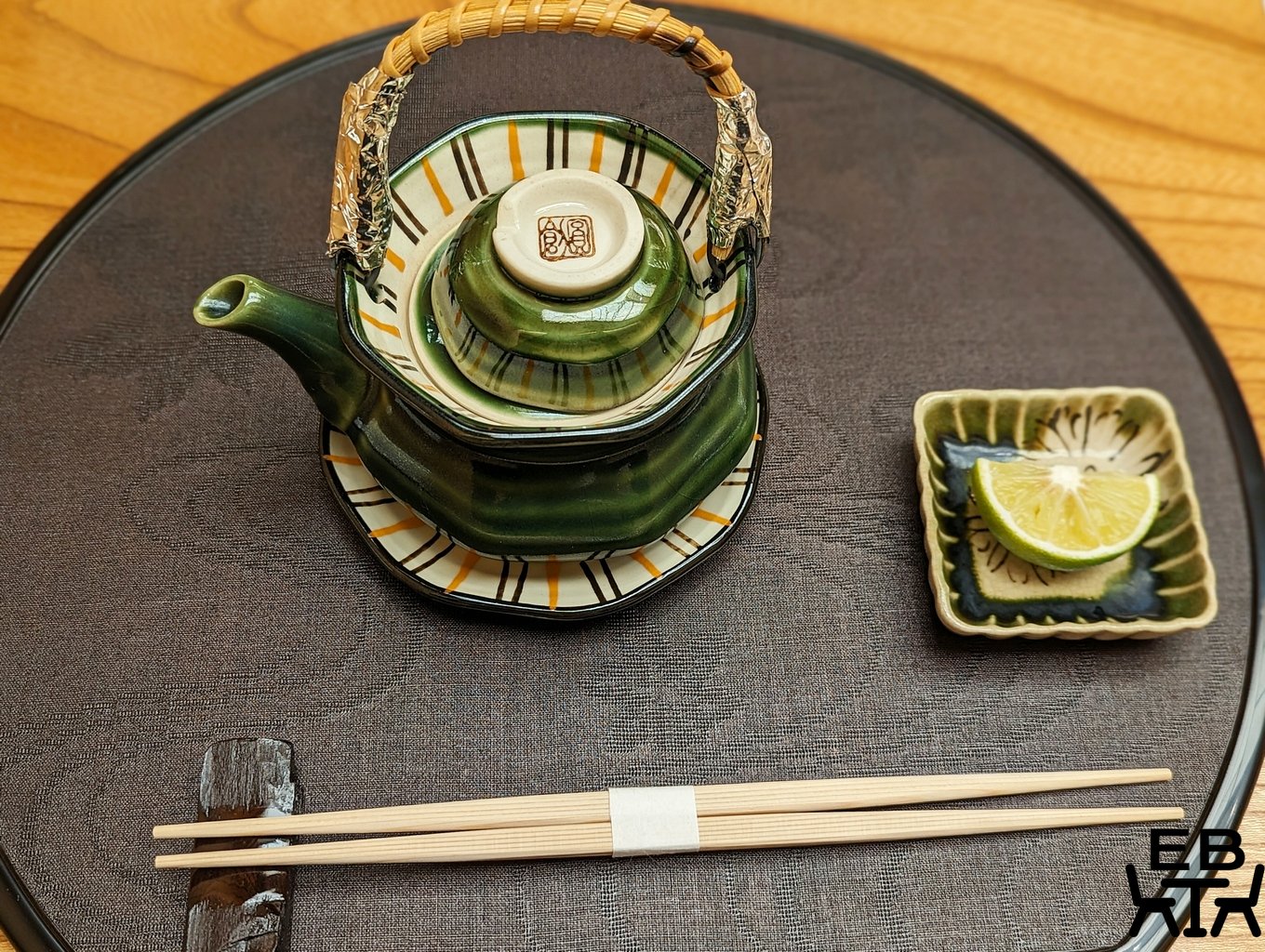
We couldn’t resist lifting the lid off the teapot to see what was in inside. Slices of matsutake mushroom, pieces of fish, a sliver of citrus, and green stalks were immersed in the broth. There were plenty of ingredients for the amount of broth. It was a clear soup, but deeply rich with flavour. Adding the citrus turned the flavour from mellow to brighter, in a clever transformation.

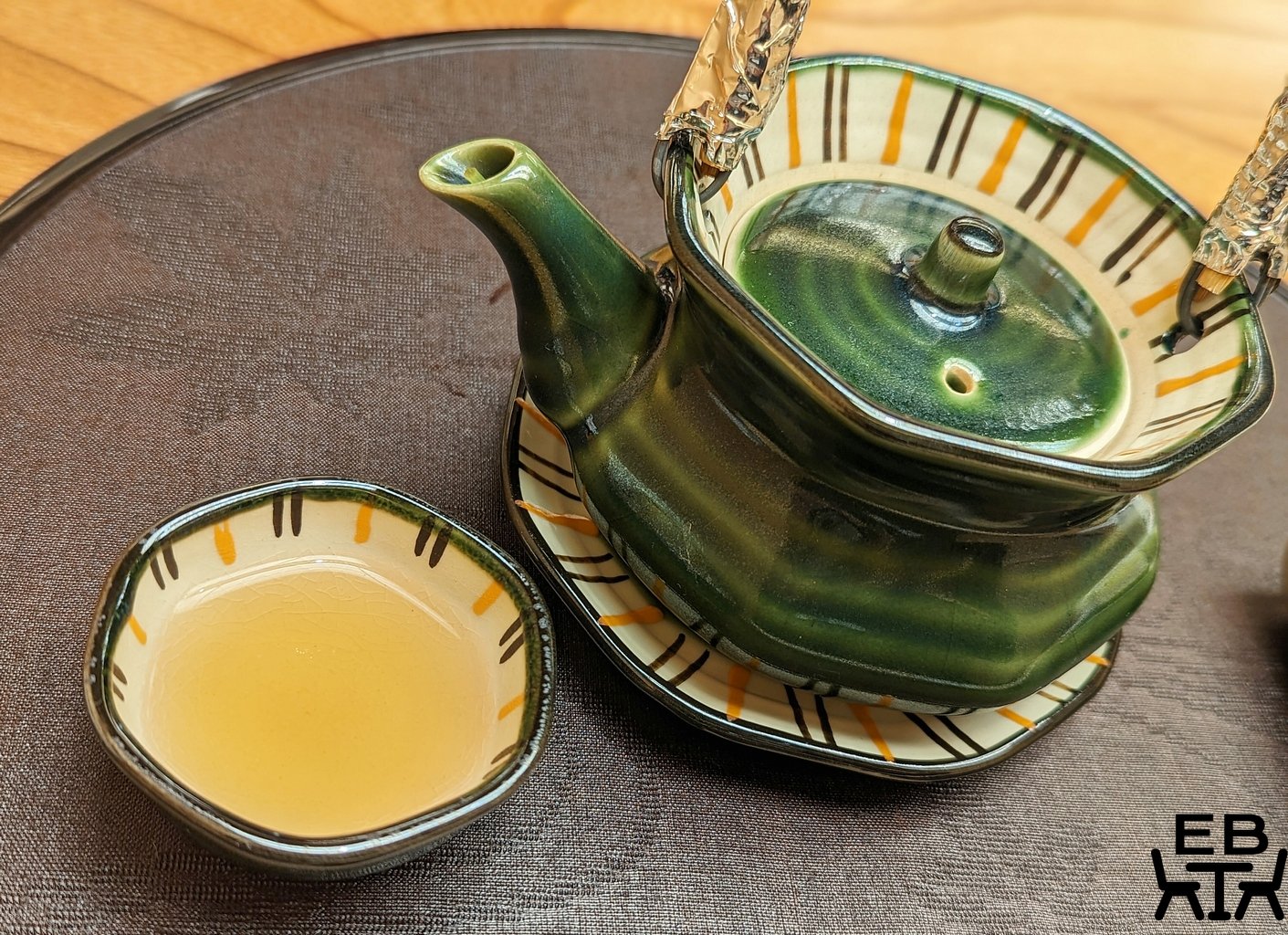
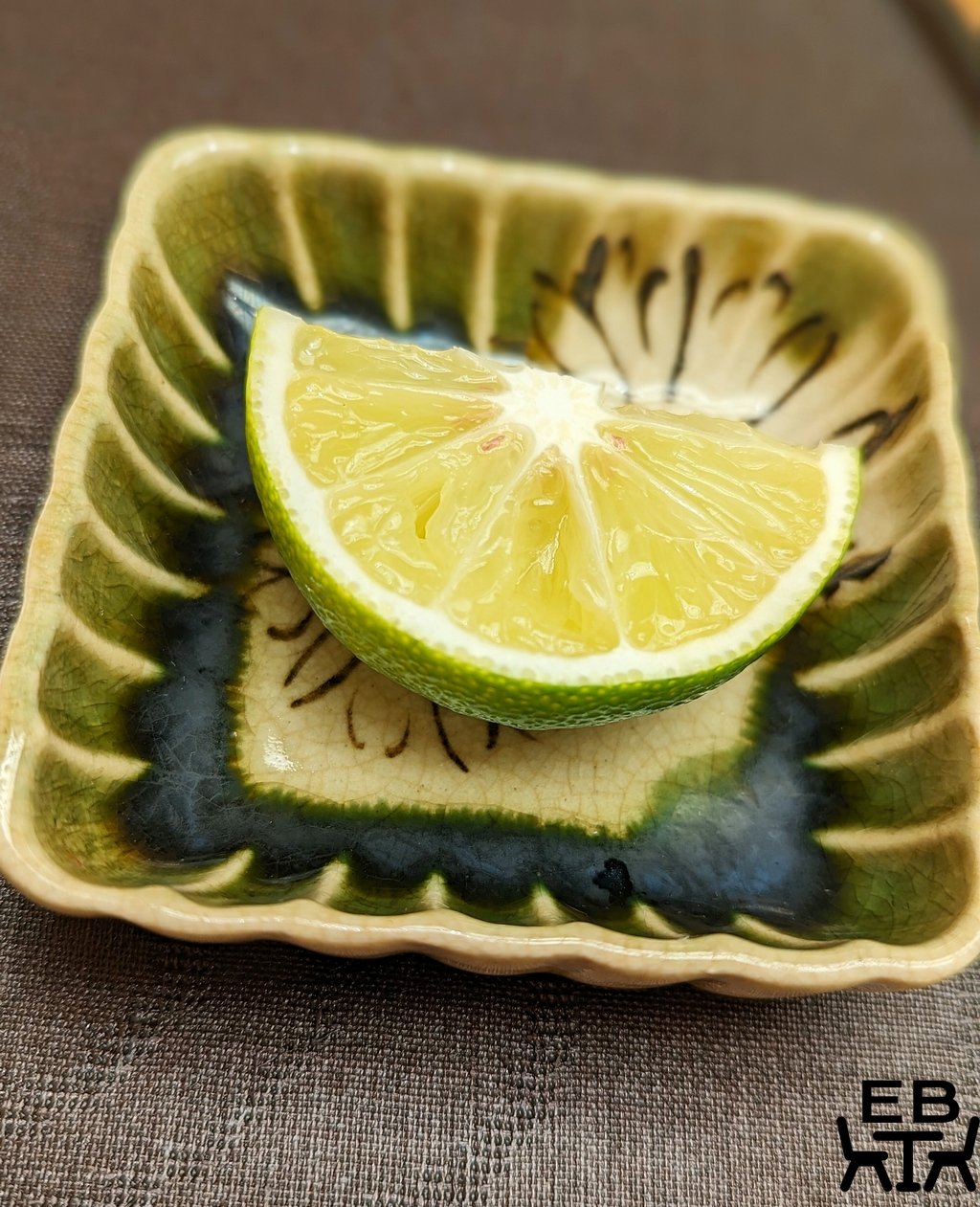
“Hirame” Halibut caught in the Seto Inland Sea. “Uni”. Sea urchin.
Translucent slices of sashimi were laid out on the dish, and uni tongues placed on them. A small mound of wasabi was placed just beside them. Before we ate, staff brought out a whole wasabi root, and told us that the wasabi they used there was grown in Hiroshima, and was 3 to 4 years old. We were advised to roll the uni up in the sashimi, and eat it with some wasabi. There was also some soy sauce to have it with. They were good together, but given how fresh the ingredients were, we also enjoyed eating them separately. The wasabi had quite a mild, delicate flavour, unlike the horseradish-adulterated version you get in most sushi places.

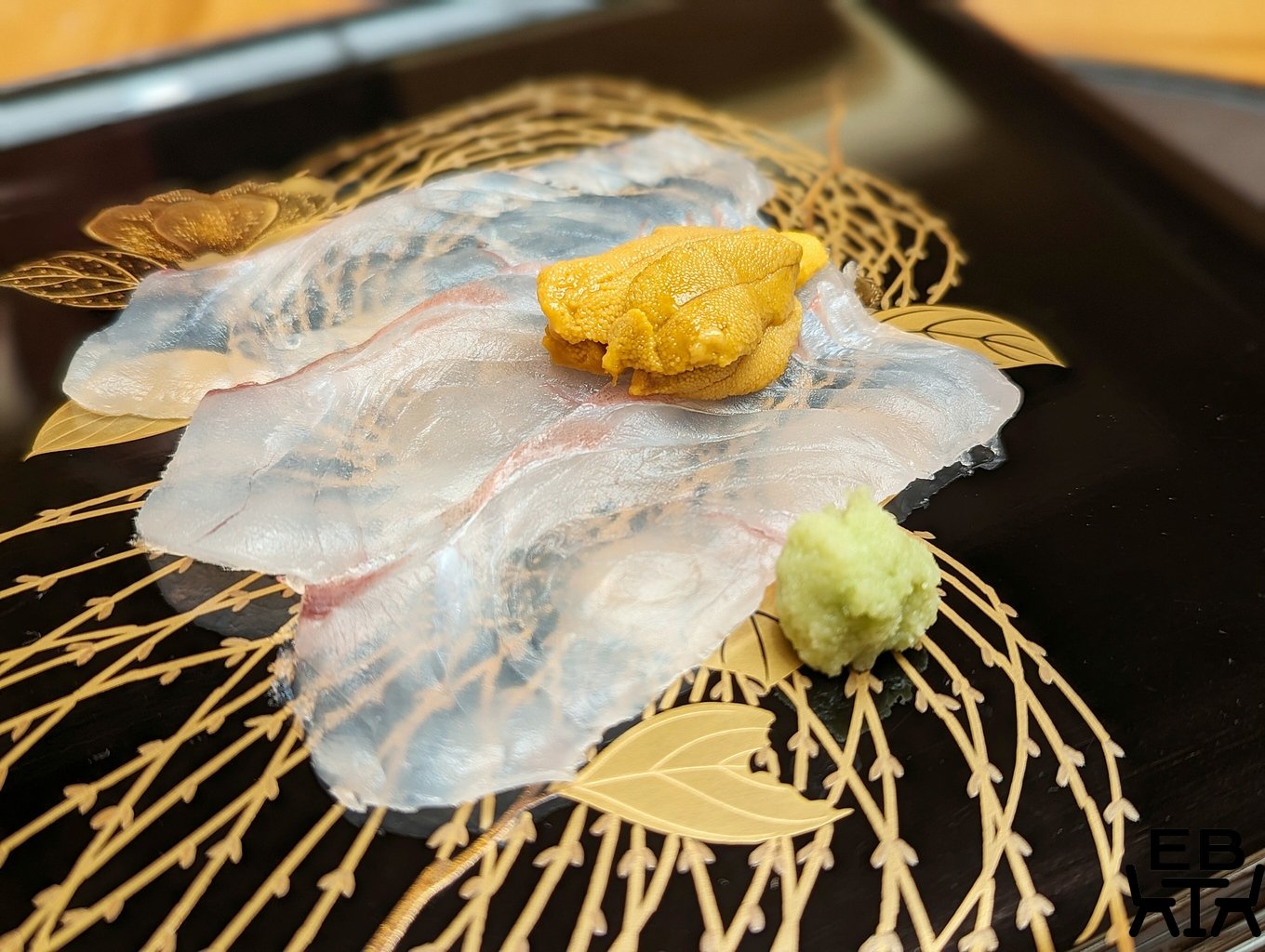
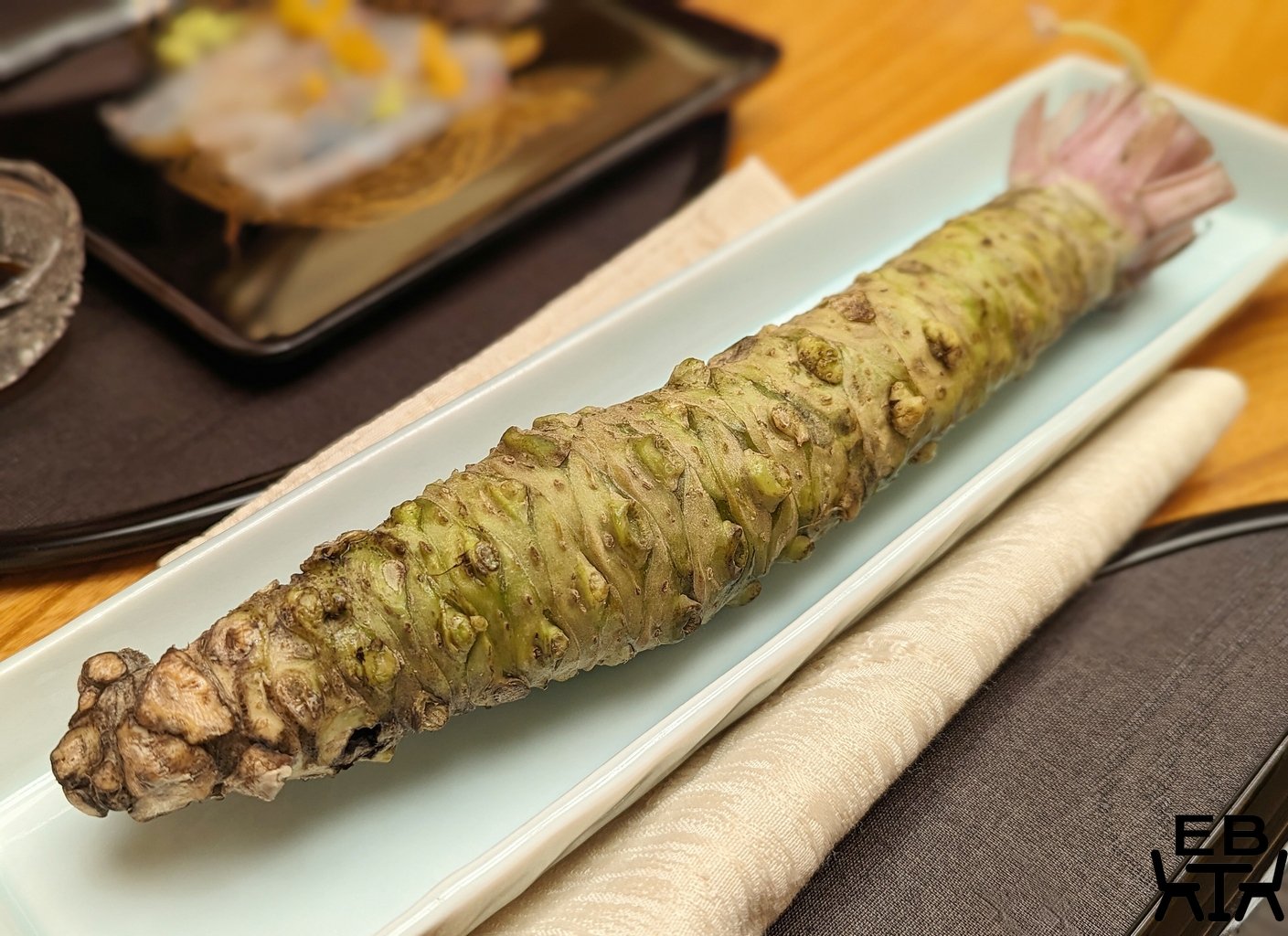
After we finished, and before they cleared the table, staff told us that the gold-lacquered plate we had eaten from was 100 years old, and handmade in Kyoto.
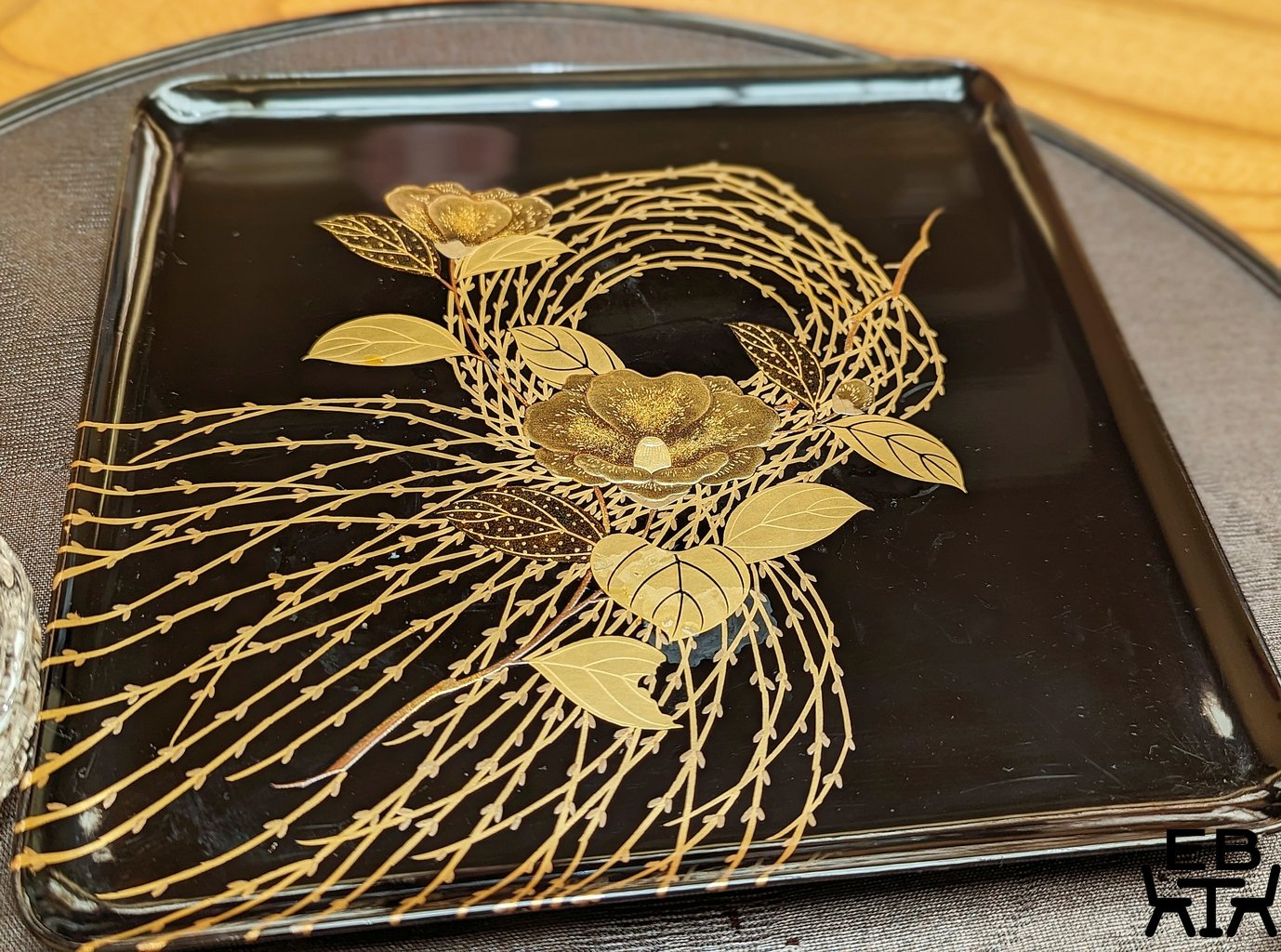
“Kawahagi” Filefish. Filefish meat and liver and skin, with original vinegar.
The components of this were not particularly photogenic, but they were arranged neatly in a conch-shaped dish. Pieces of the cooked filefish flesh, pieces of filefish liver, and pieces of raw filefish flesh mixed with liver were placed together, along with a small sphere of chilli citrus. There was also a small bowl of their original vinegar.
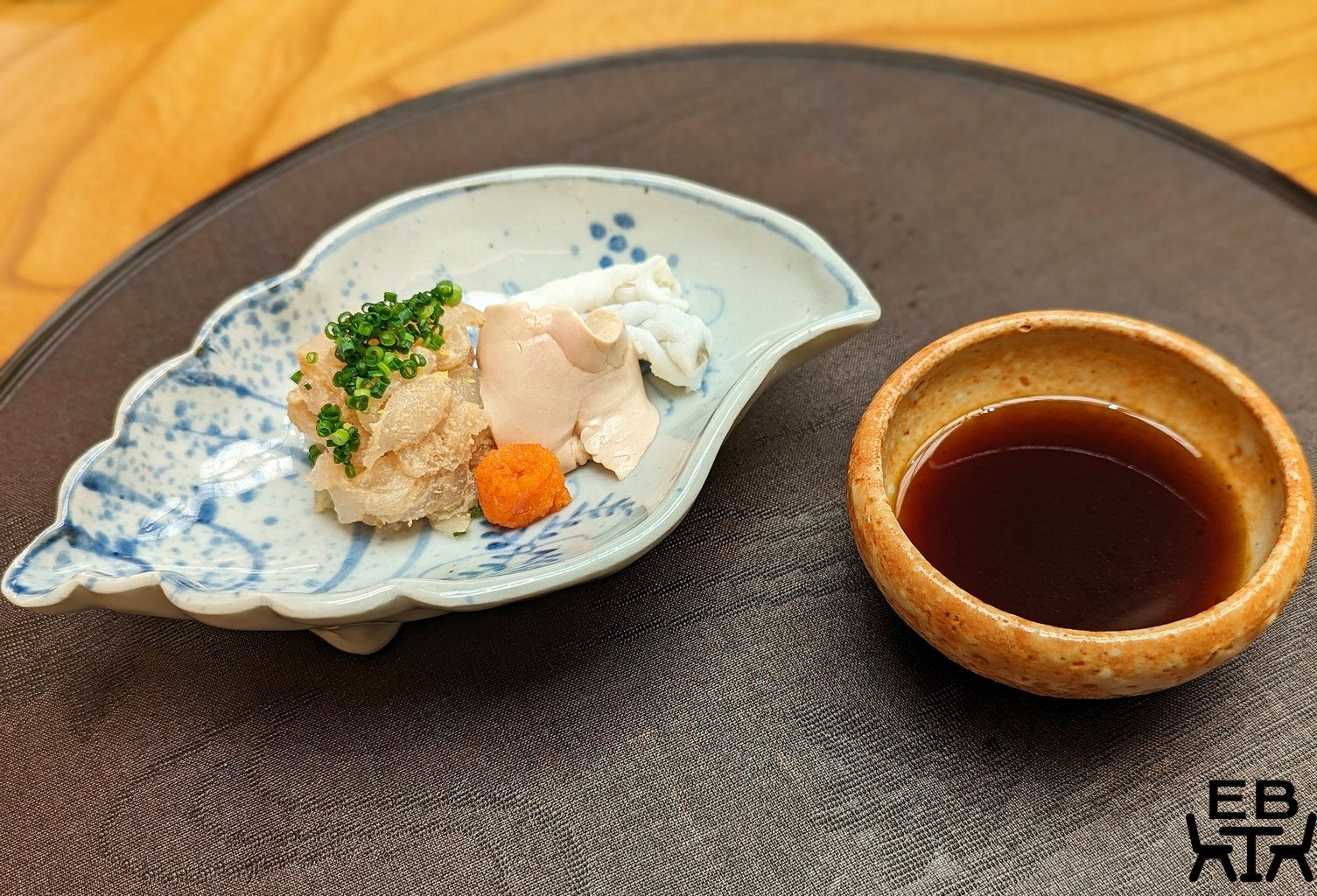
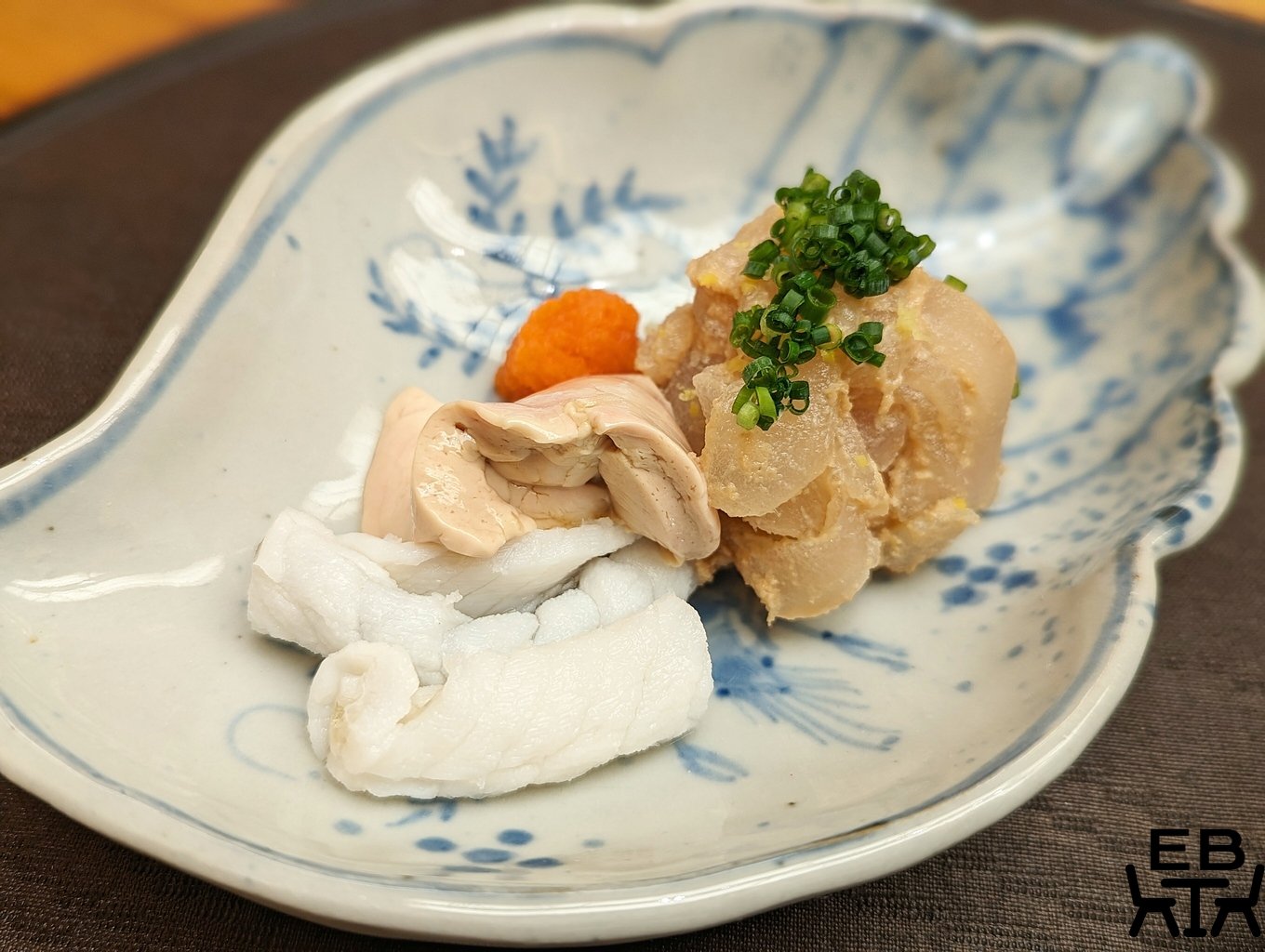
The liver was fatty and soft – softer than foie gras, with a custard-like texture. It had quite a neutral flavour. The fish flesh was firmer, in texture contrast. The flavours of this dish were subtle and mild, but the focus was probably more about texture.
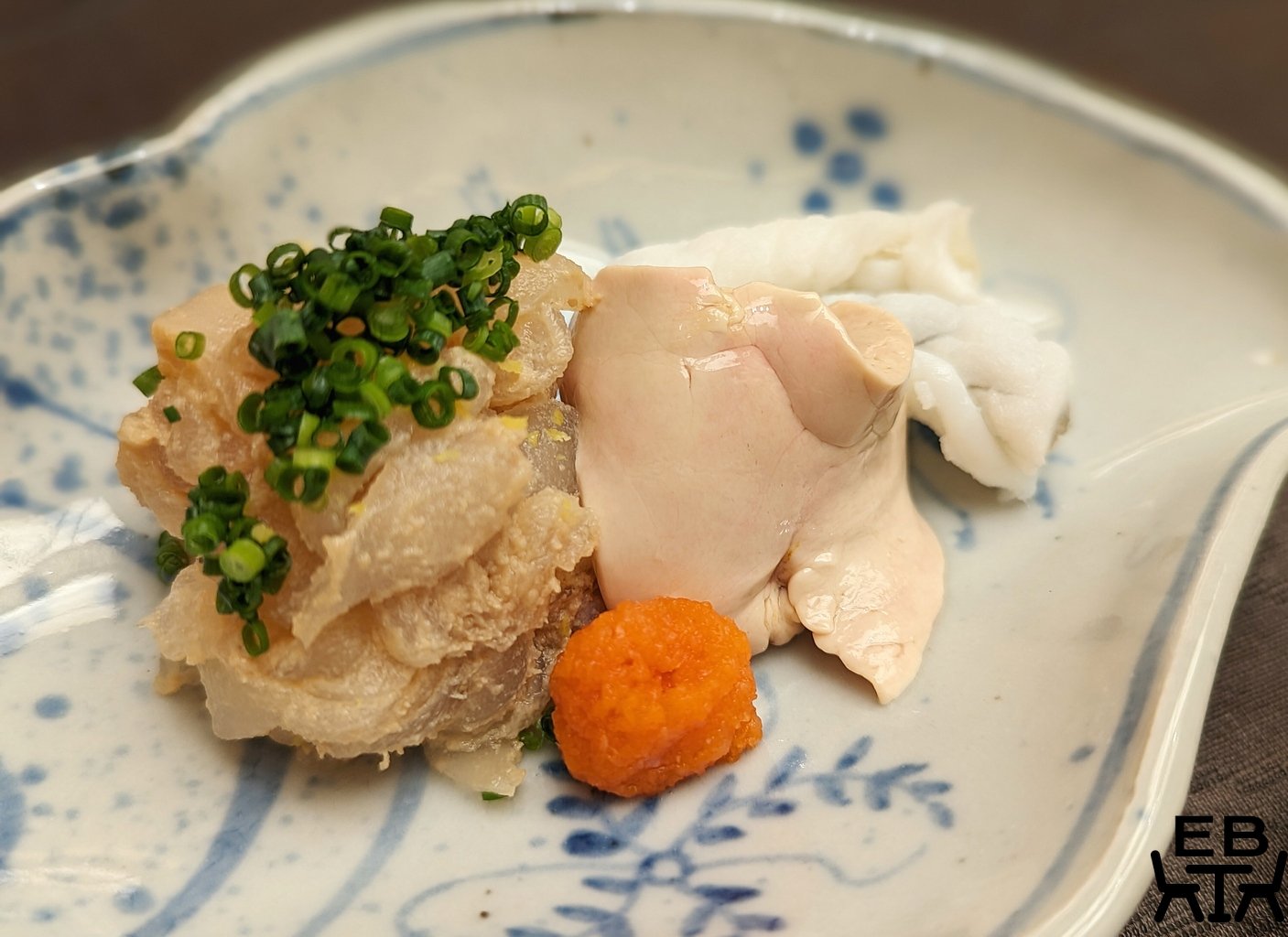
“Ika” Squid caught in Shimane Prefecture, with “Karasumi” dried mullet roe.
This was a brighter presentation, with the yellow-orange mullet roe blanketing strips of squid, upon a vibrant orange-patterned plate. We were to mix it together so that the roe coated the squid. The thinly sliced squid had a bit of chew to it, and the mullet roe imparted saltiness. Finishing the food revealed the phoenix at the centre of the plate.

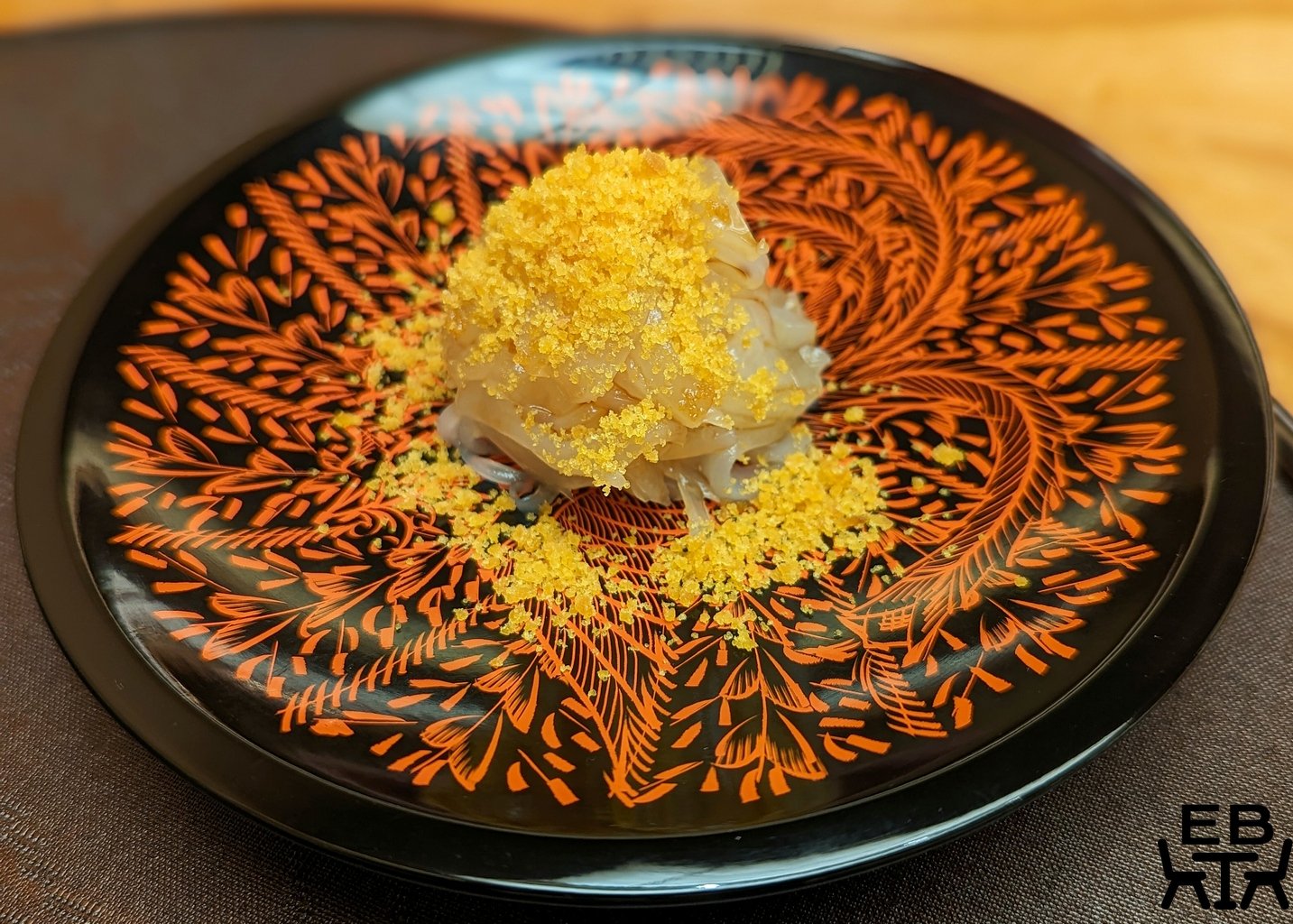
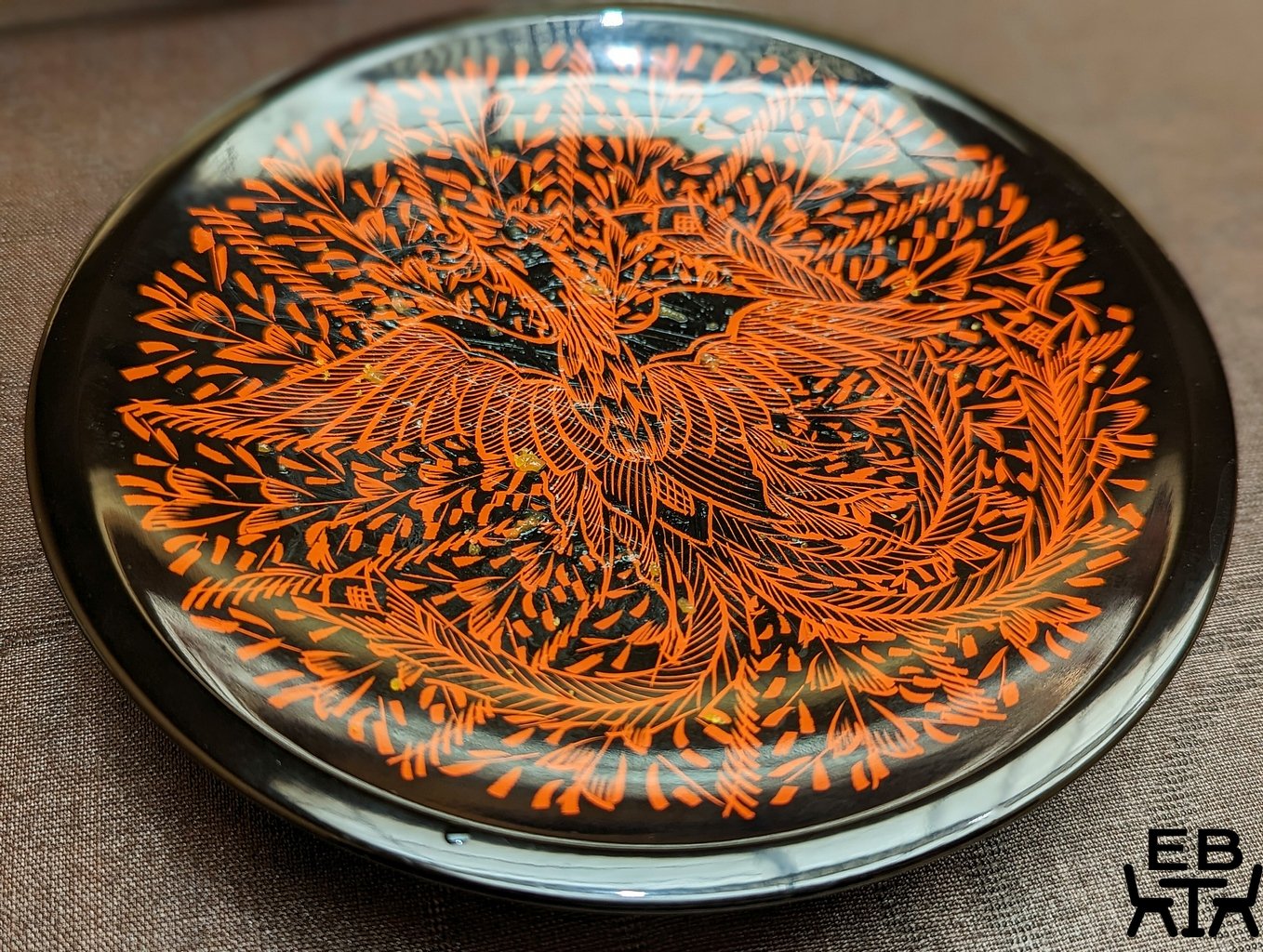
Soup (Dashi). “Sawara” Spanish mackerel caught in Yamaguchi Prefecture, with “Daikon” Japanese white radish.
This was quite simply presented, with the cooked mackerel served in the dashi with small pieces of radish, topped with some greens. The mackerel was on the salty side, but the soup needed seasoning, so when had together, it evened out.
The intricate pattern of the servingware for this dish was only seen once the lid was taken off. We were told that this too was 100 years old and handpainted, and that the pattern was used only in autumn.
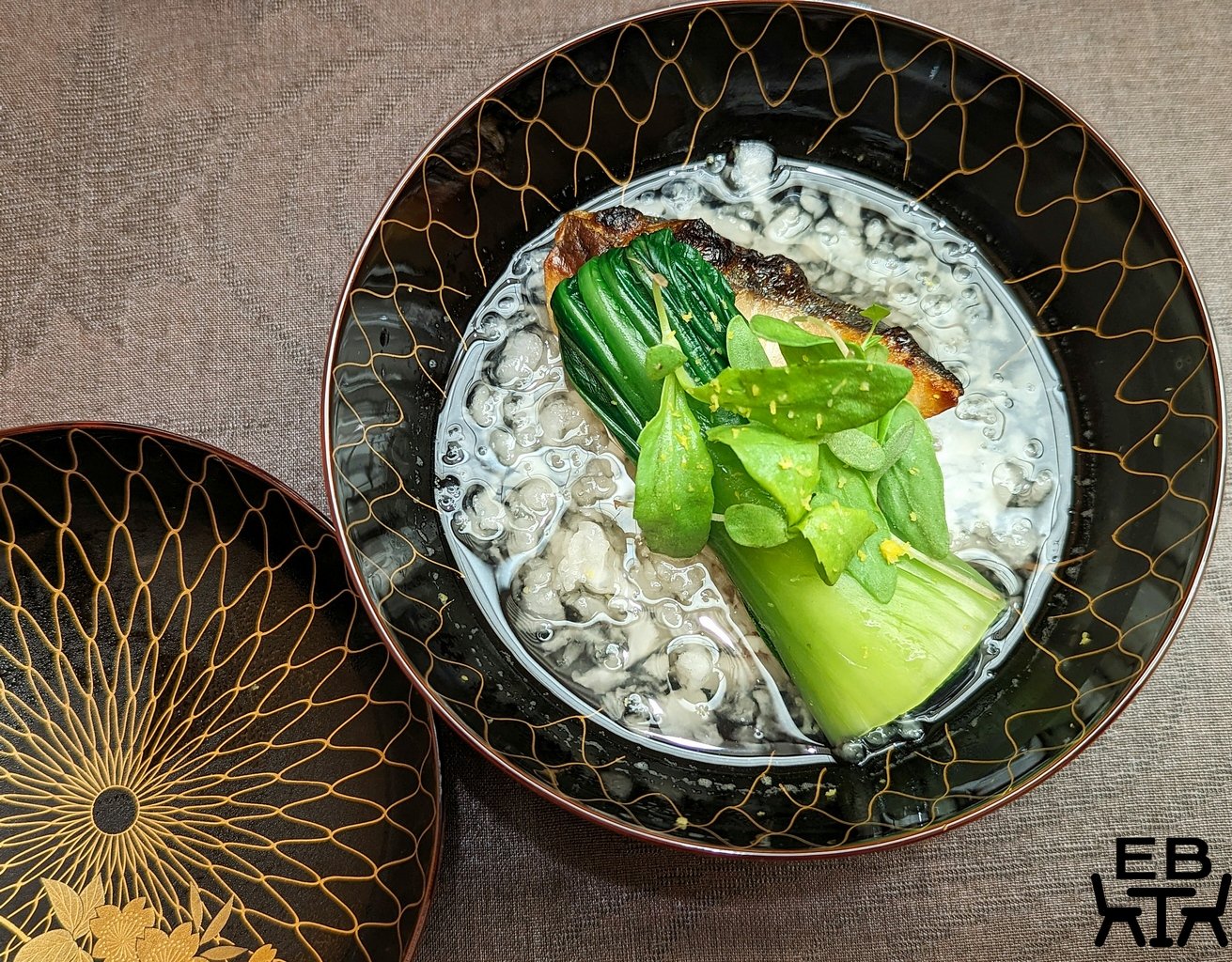

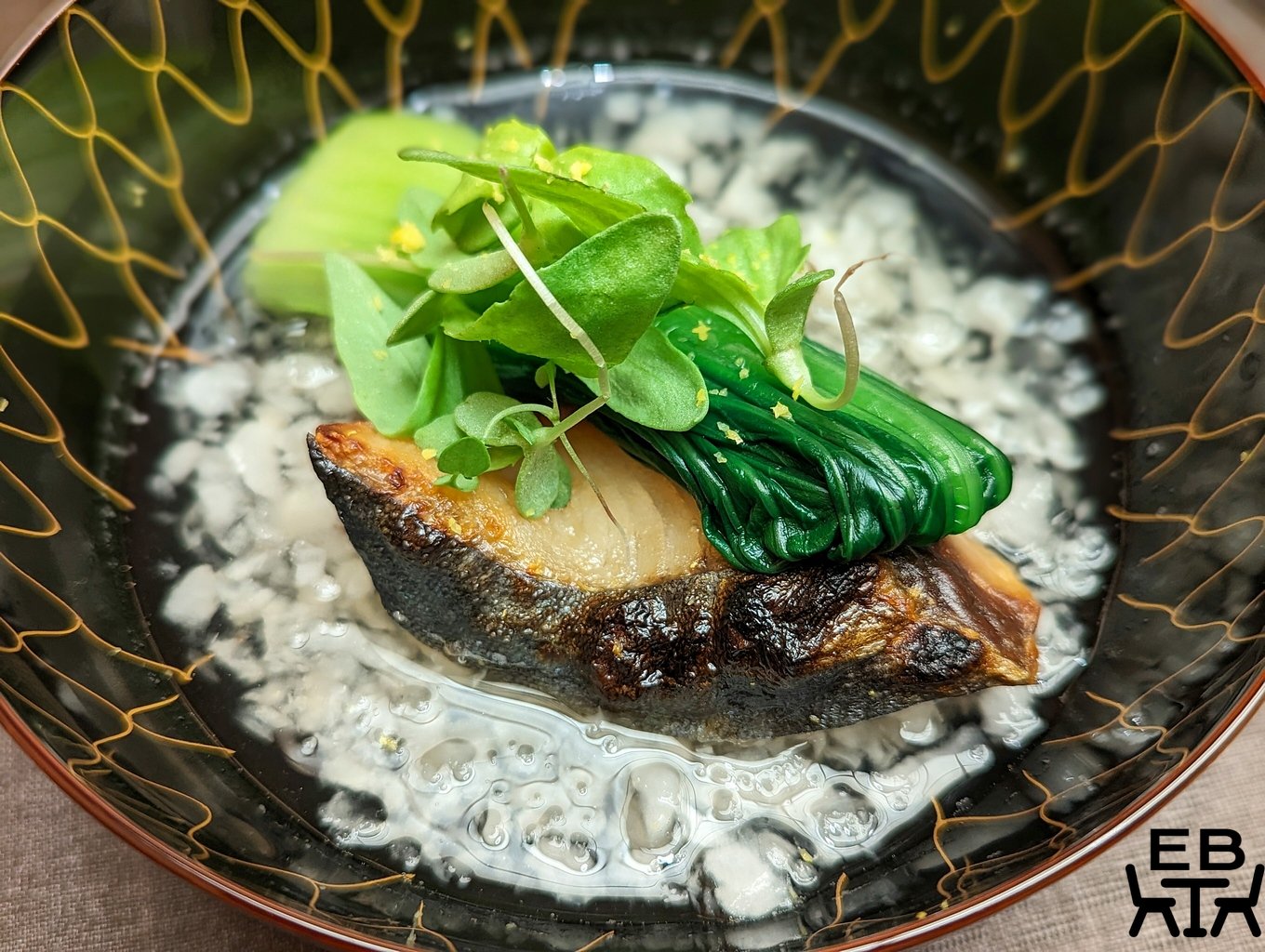
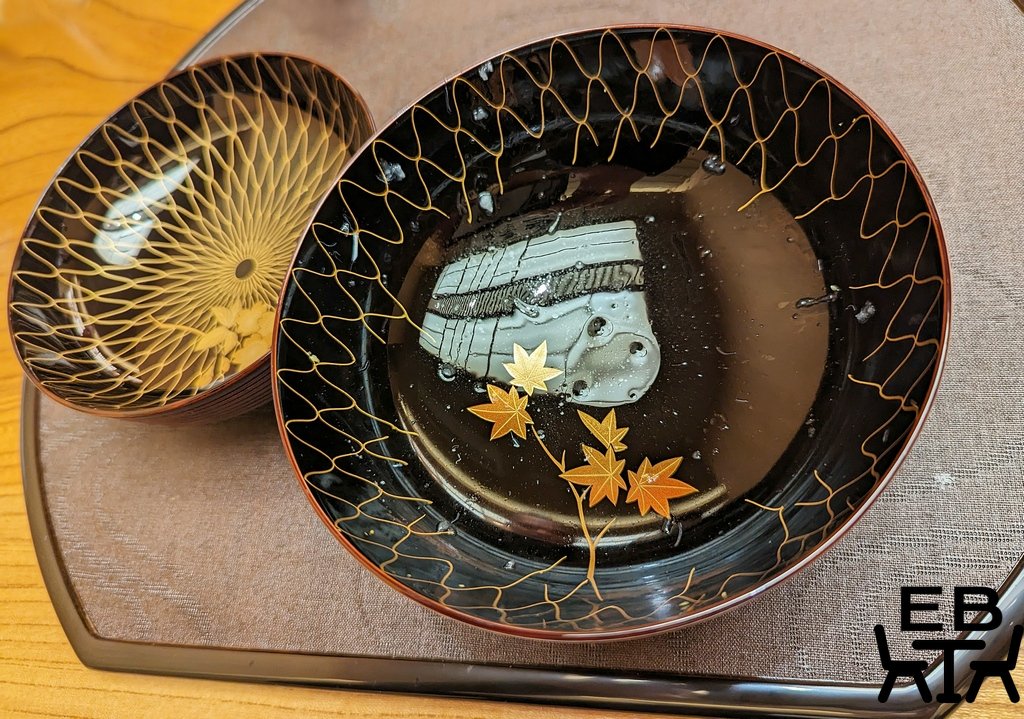
Grilled “Unagi” eel. Cook the fish over the charcoal. (This is verbatim from the menu.)
We smelled the smoky aroma as it was brought to the table. This was a very simply presented dish, with a wedge of lemon on the two pieces of eel, and a dollop of wasabi. The eel was definitely the star, and perhaps it just needed no adulteration. The outside was just crisp, almost like a rice cracker in its lightness. The eel flesh was tender and juicy. Unagi often seems stodgy when cooked, masked by sticky glaze. It was masterfully done in this case though, and really showcased the eel.
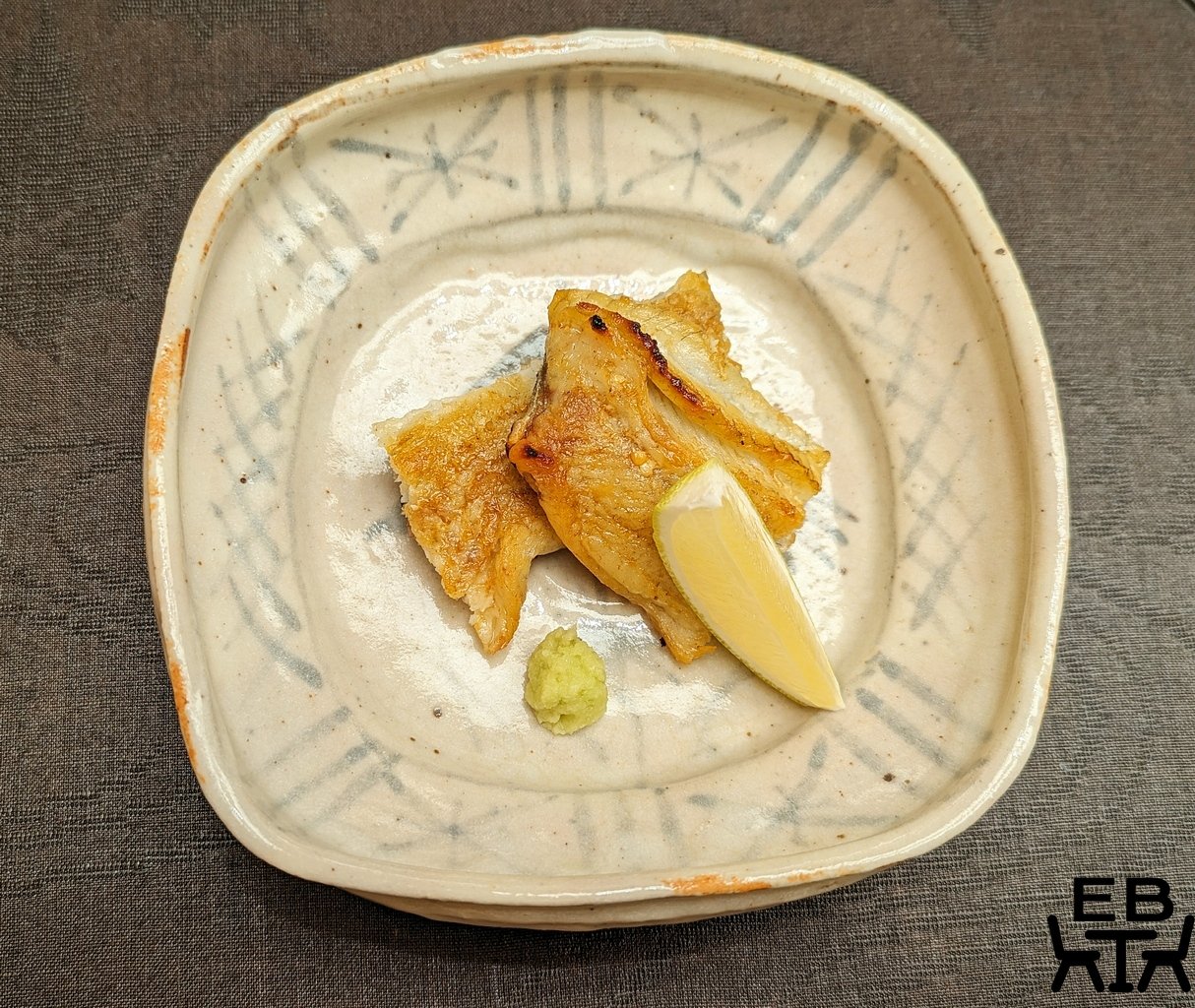
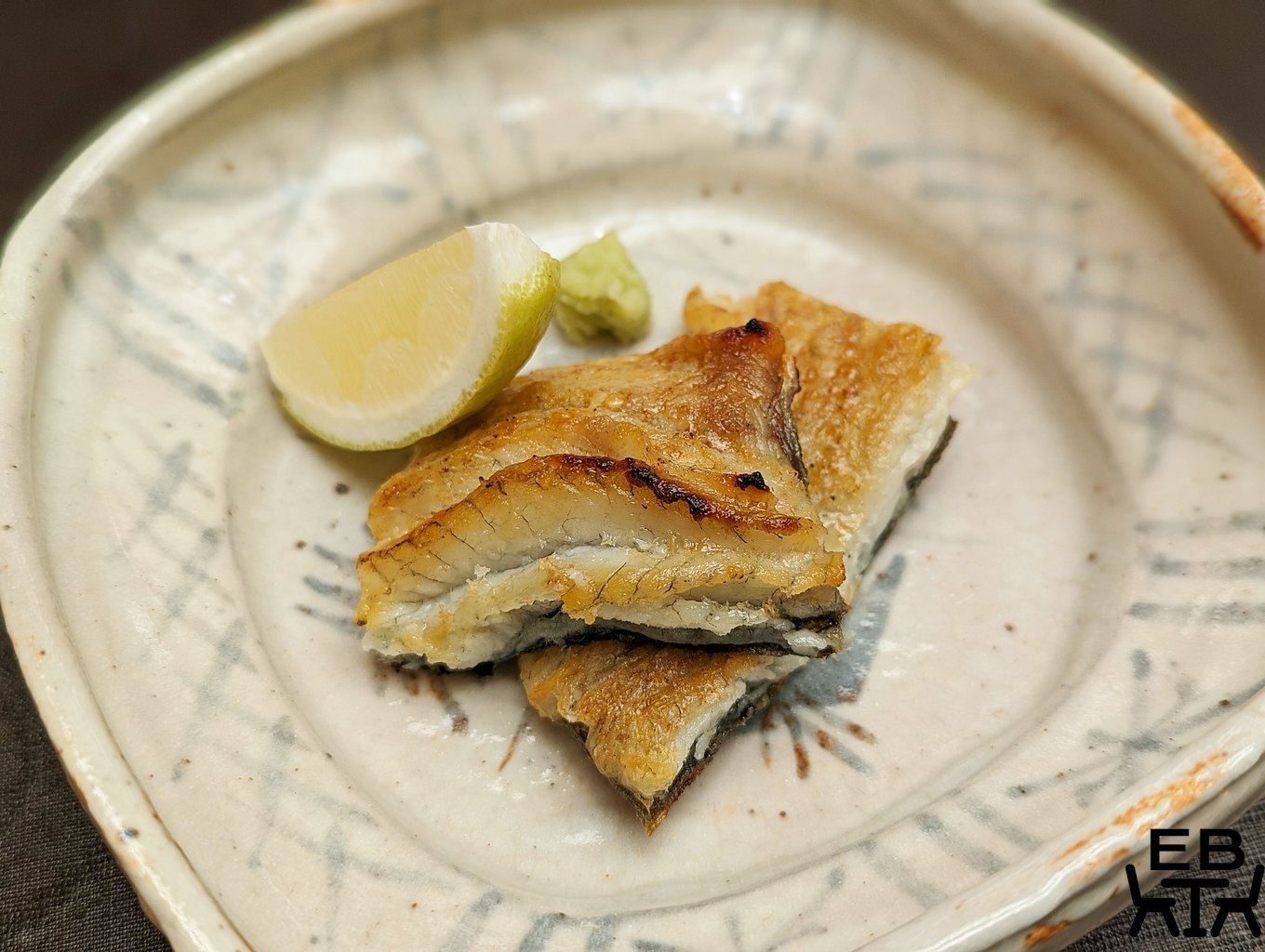
Boiled “Renkon” lotus root. After grated lotus root, boiled, knead.
When you lifted the lid of the patterned bowl, you found a brown sphere in a brown soup. Appearances once again proved deceptive though. We were told that this dish had been on the menu when the restaurant first received its three Michelin star rating in 2013. The ball was made from lotus root. Despite being submerged in liquid, it retained crunch outside. It had a soft chew on the inside. The thick, almost glutinous soup was savoury, with a hint of sweetness. The nori wrapped around the lotus root ball added another layer of flavour, and the dab of mustard on top packed a punch. This was a deft combination of textures and flavours, and we could certainly see this as a Michelin star dish.
We were also told that the painted bowls they were served in were 200 years old.
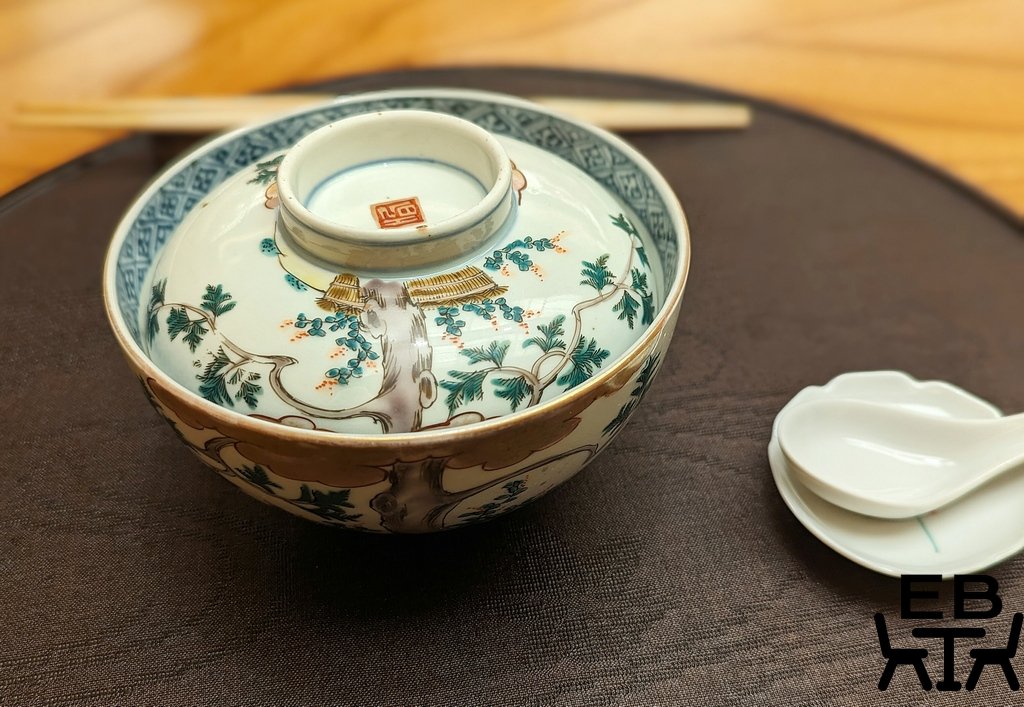
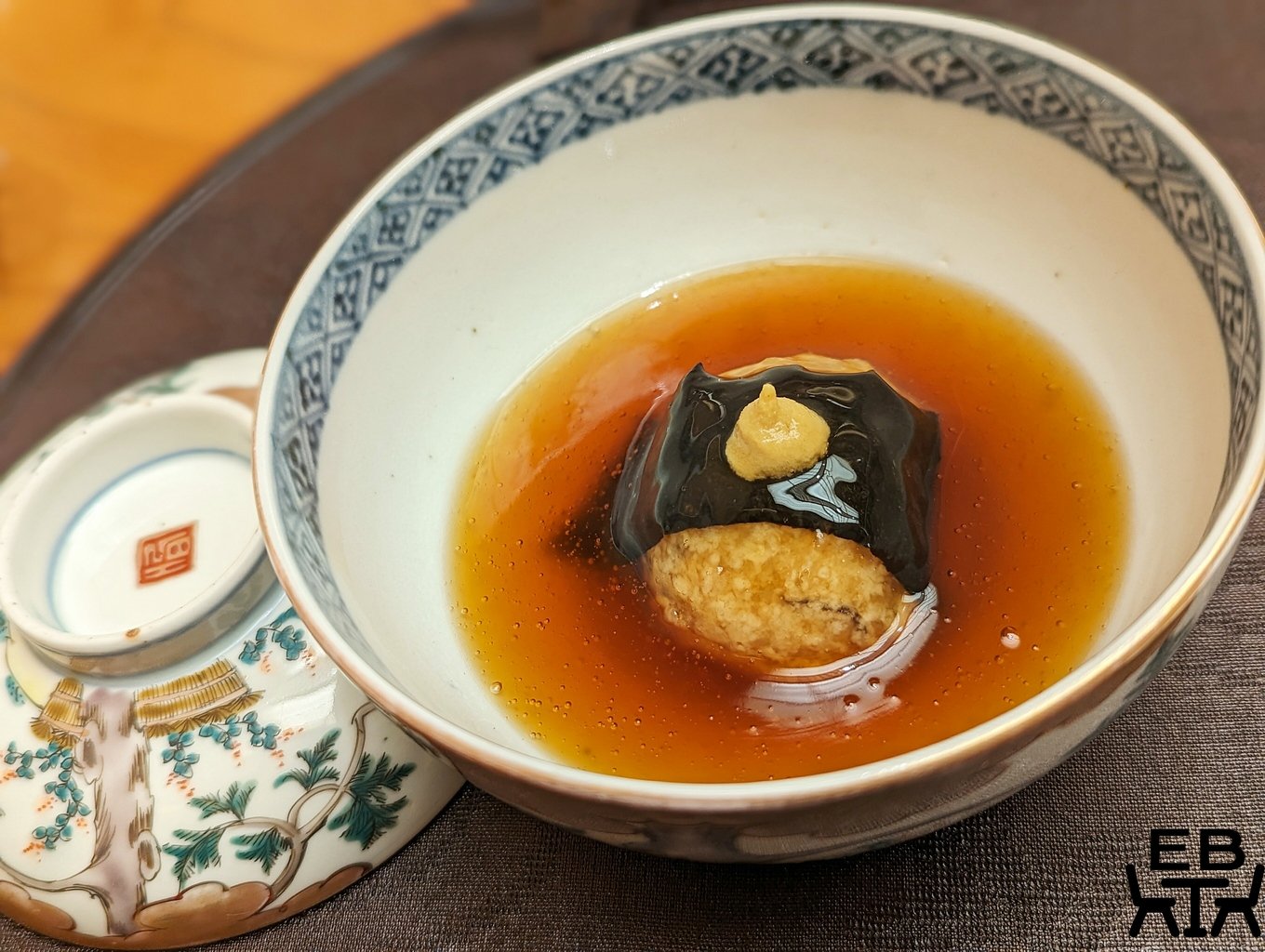

Steamed “Mentai” Armored cusk fish, with herbs and vegetables.
This too was a simply presented dish, the piece of fish placed on a bed of herbs. The steamed fish was firm, but not tough. It was just lightly seasoned. The herb salad that accompanied it also had mild flavours, lightly lemony and vinegary.

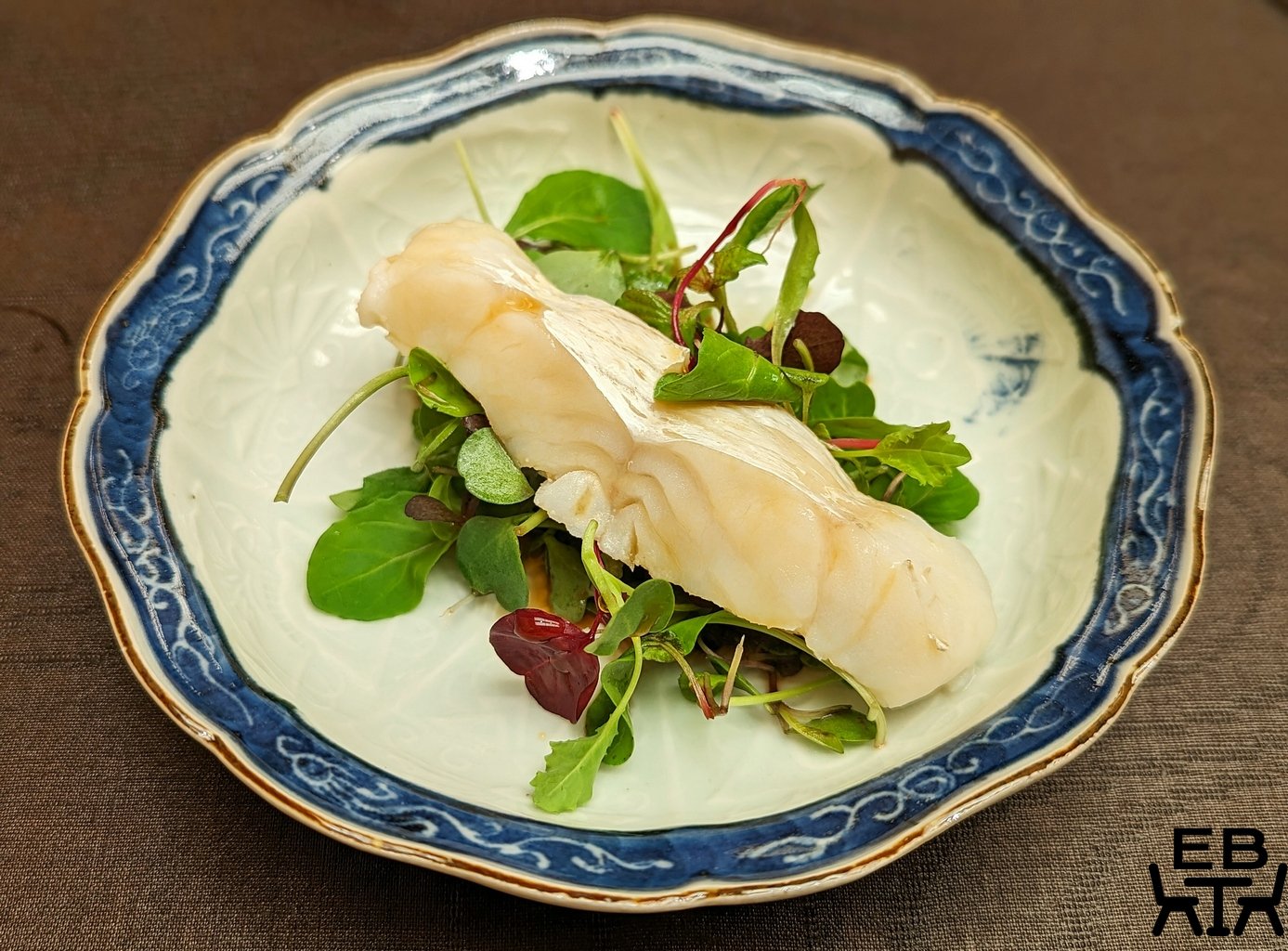
Rice. “Sake” salmon and “Ikura” salmon eggs of the cooked rice. Miso soup and pickles.
A rice dish is often the last item served in a kaiseki course before finishing with dessert. We were shown the large earthenware pots each table’s serving of rice and fish were cooked in. We were also allowed to peer into our pot and see the salmon pieces and greens layered over the rice. The pots were then taken away, and the contents distributed, so that each person was served a bowl with some of the rice, salmon, and greens.
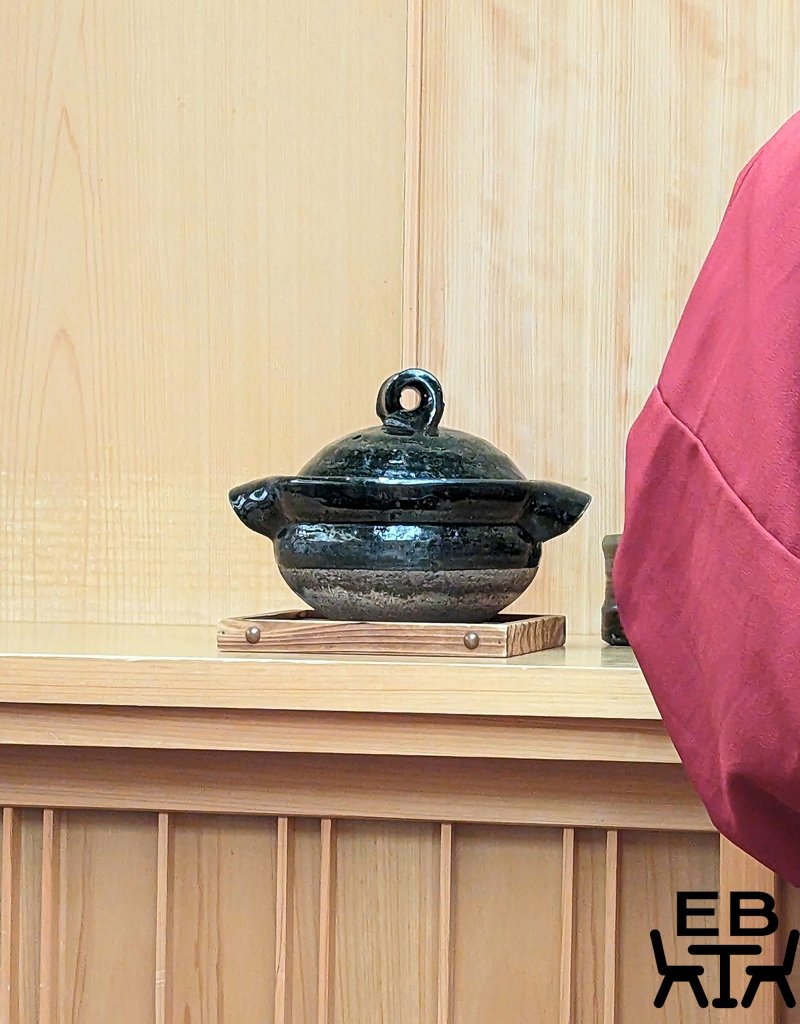

Each diner also received a dish of pickles, and each set of diners shared a bowl of ikura.
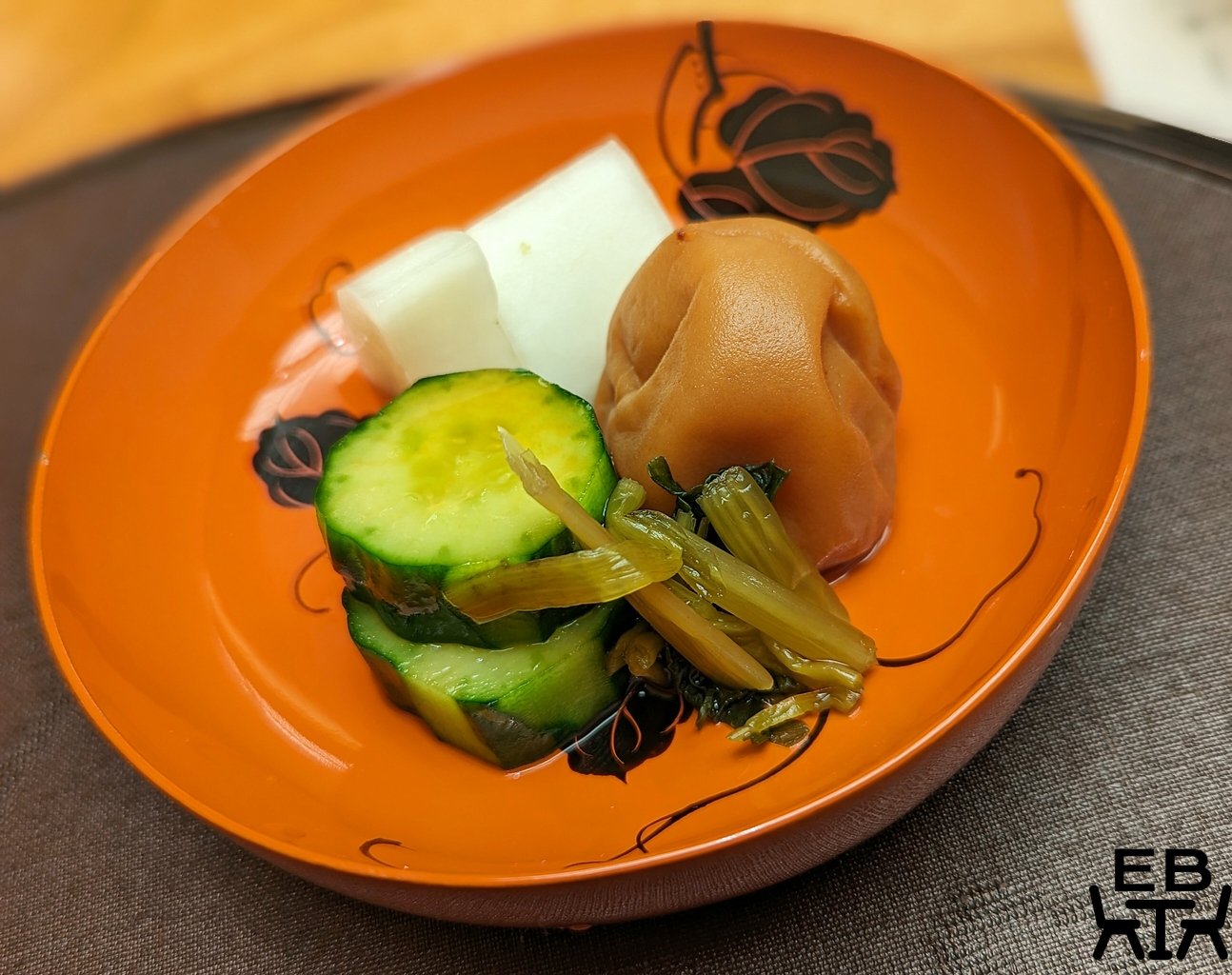
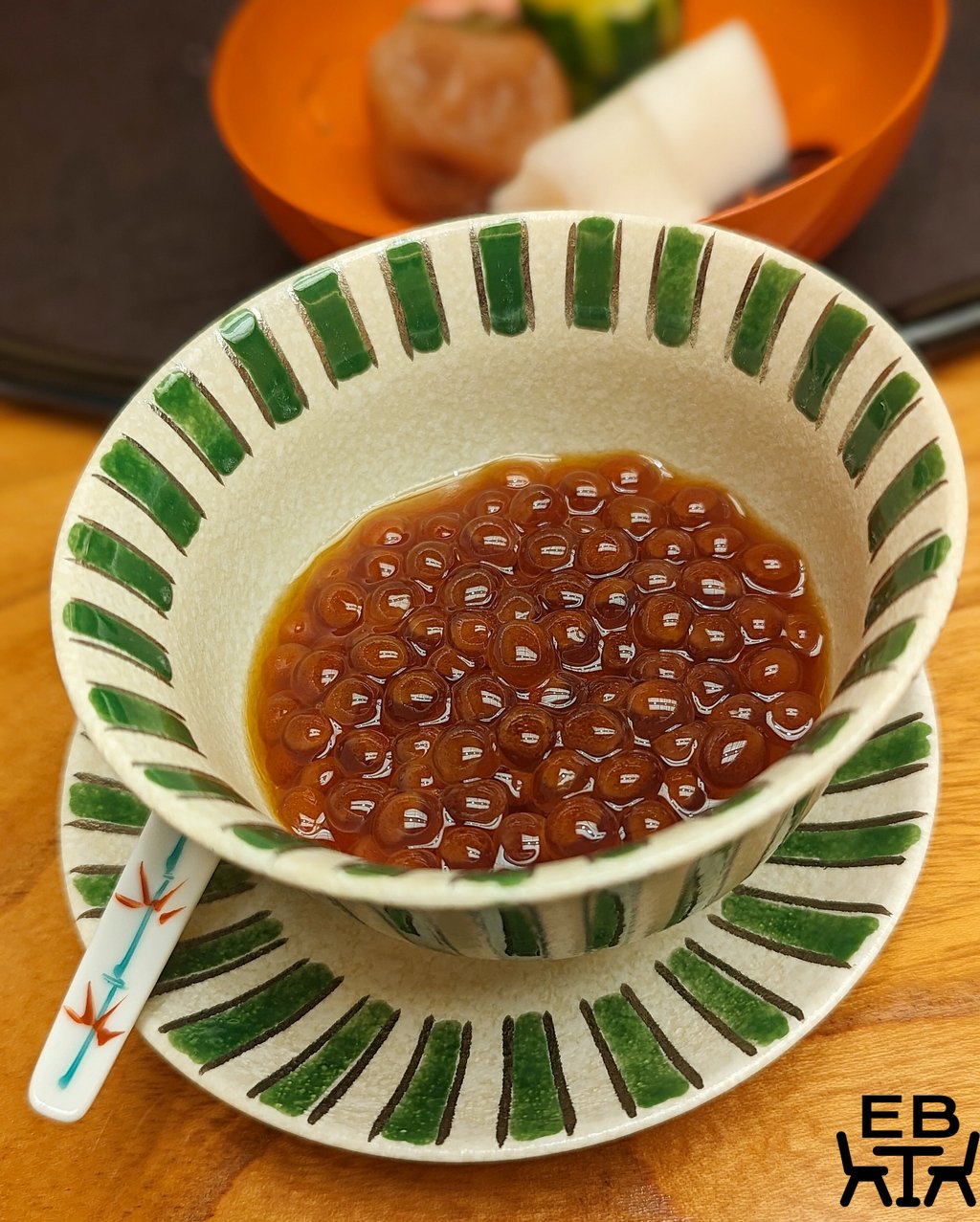
The rice had crisp sections, like the crunchy base you get at the bottom of claypot rice. The salmon was well cooked, but not particularly seasoned itself. The ikura were definitely fresh, different from the ones you more typically get at casual Japanese eateries. They were glossy and unctuous, and less salty than others. They helped to bring the rice and salmon mix together, which would otherwise have been quite dry. Diners were told that we could bring the leftover rice and fish home, which, given the size of the pots and the amounts that were in the bowls, may have been another serving per person. As we wouldn’t have a way to reheat food in our hotel room, that wasn’t an option for us. It would have been a benefit for local patrons though.
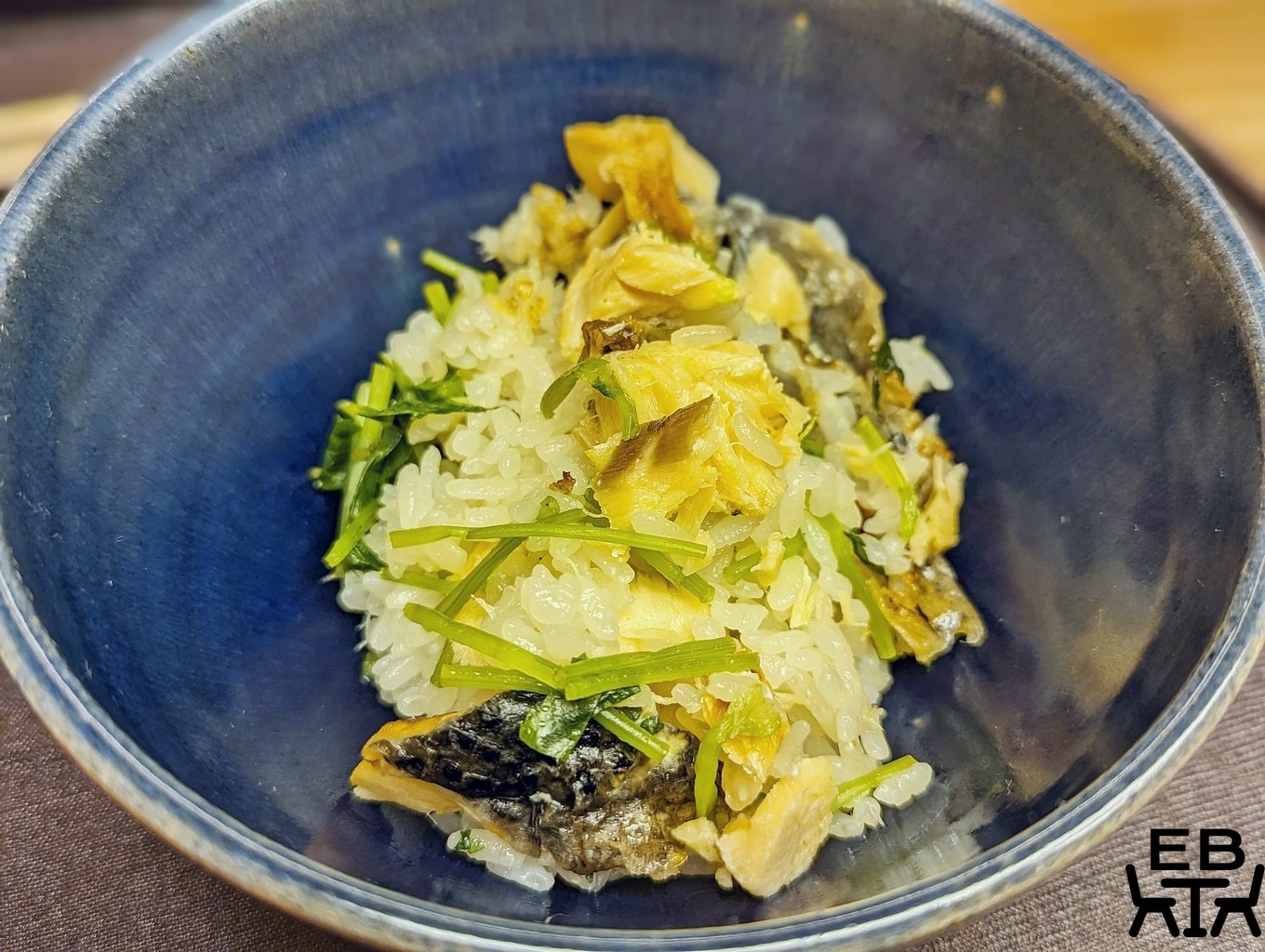
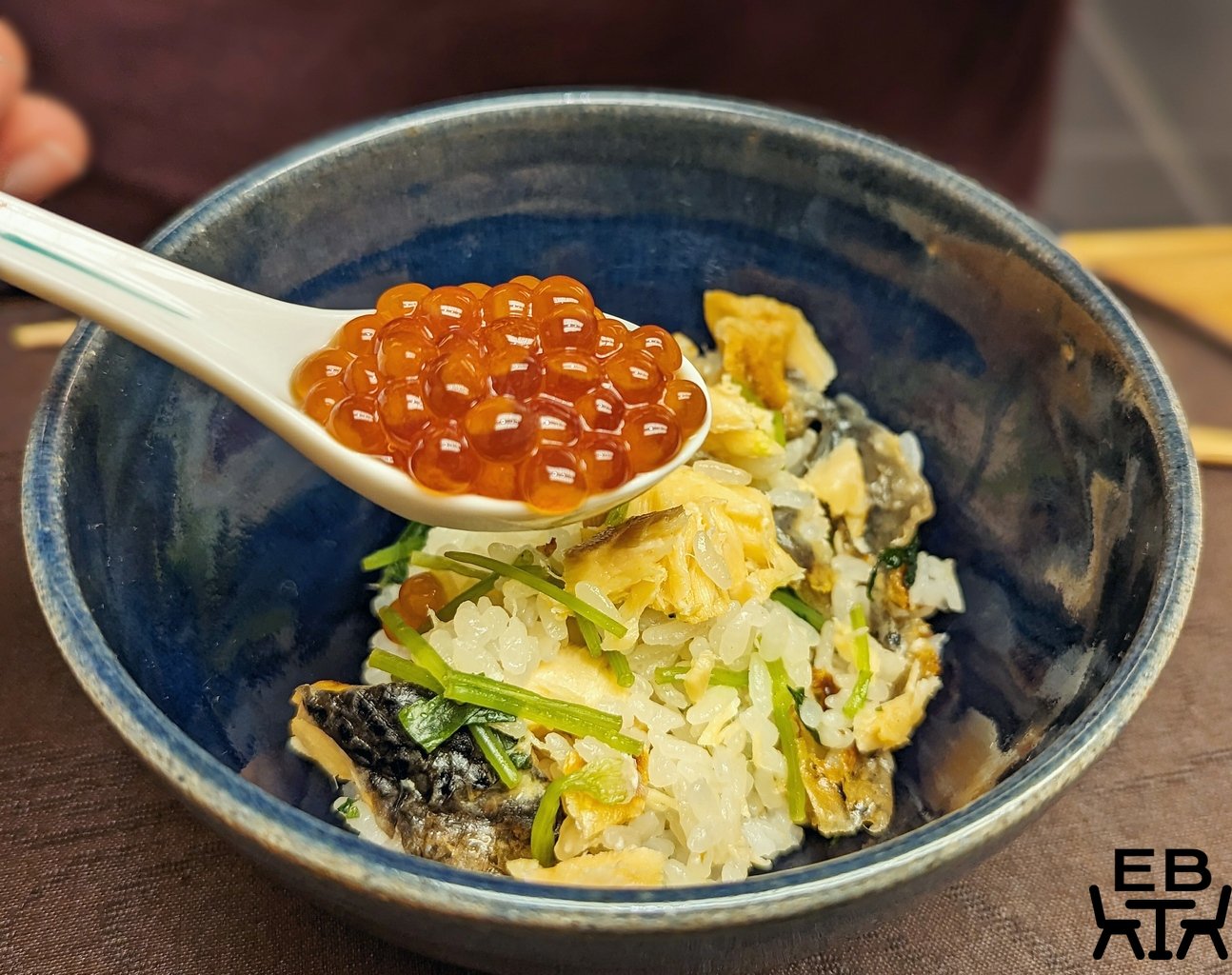
The pickles were crisp, and had their traditional flavours – pickled daikon and cucumber, umeboshi, and takana. The miso soup accompanying it was again different from what you get at casual eateries, denser, and a mix of sweet and savoury umami.
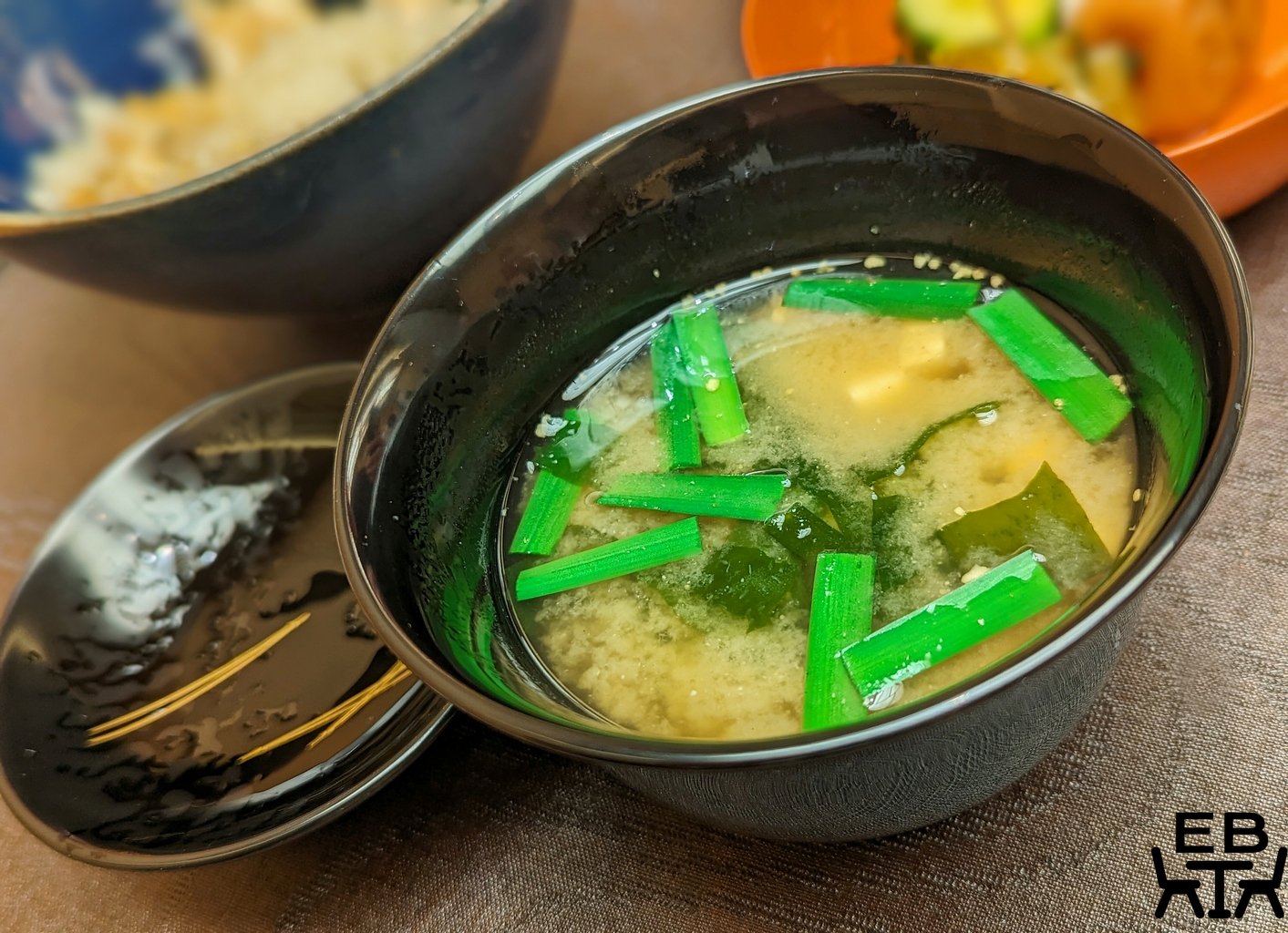
Dessert. “Zenzai” A sweet soup made of red beans.
A sheet of paper with a print of a crane and a red sun was placed on the table to serve as a placemat to present this dish. Served in a patterned glass with a gold rim and lid, this last finishing item was simple but classic. The red bean soup was lightly sweet, and thick rather than watery. The glutinous rice dumplings were soft and chewy, and there were little pieces of sweet potato at the bottom for more texture.
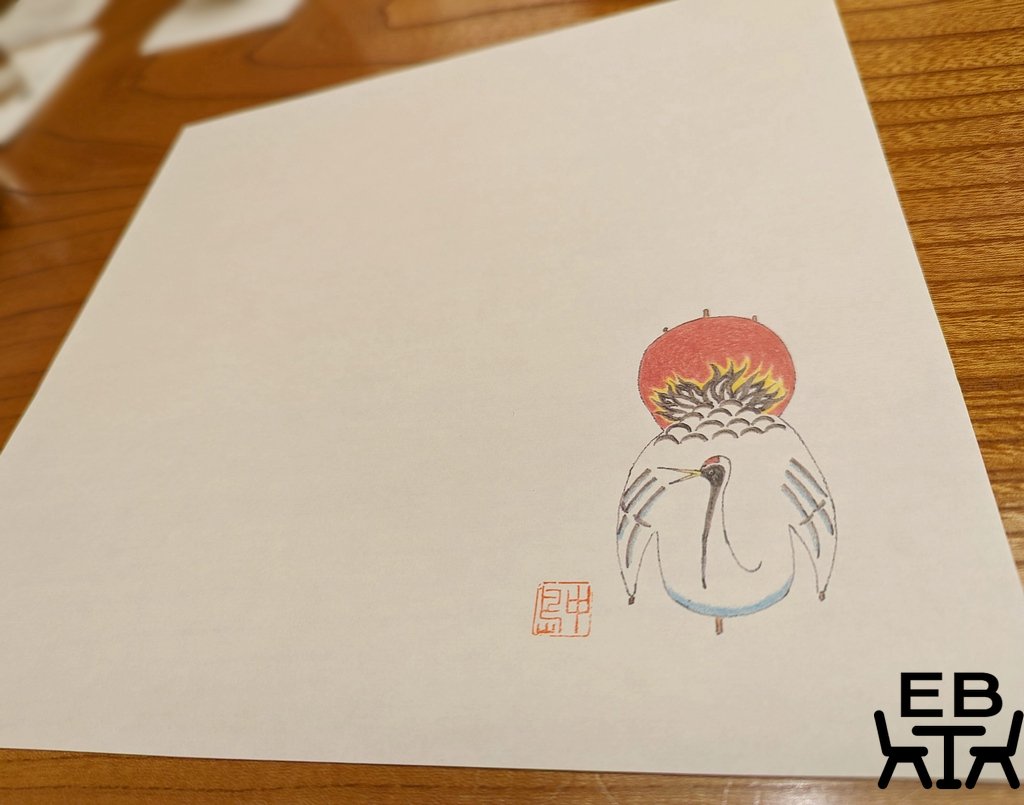
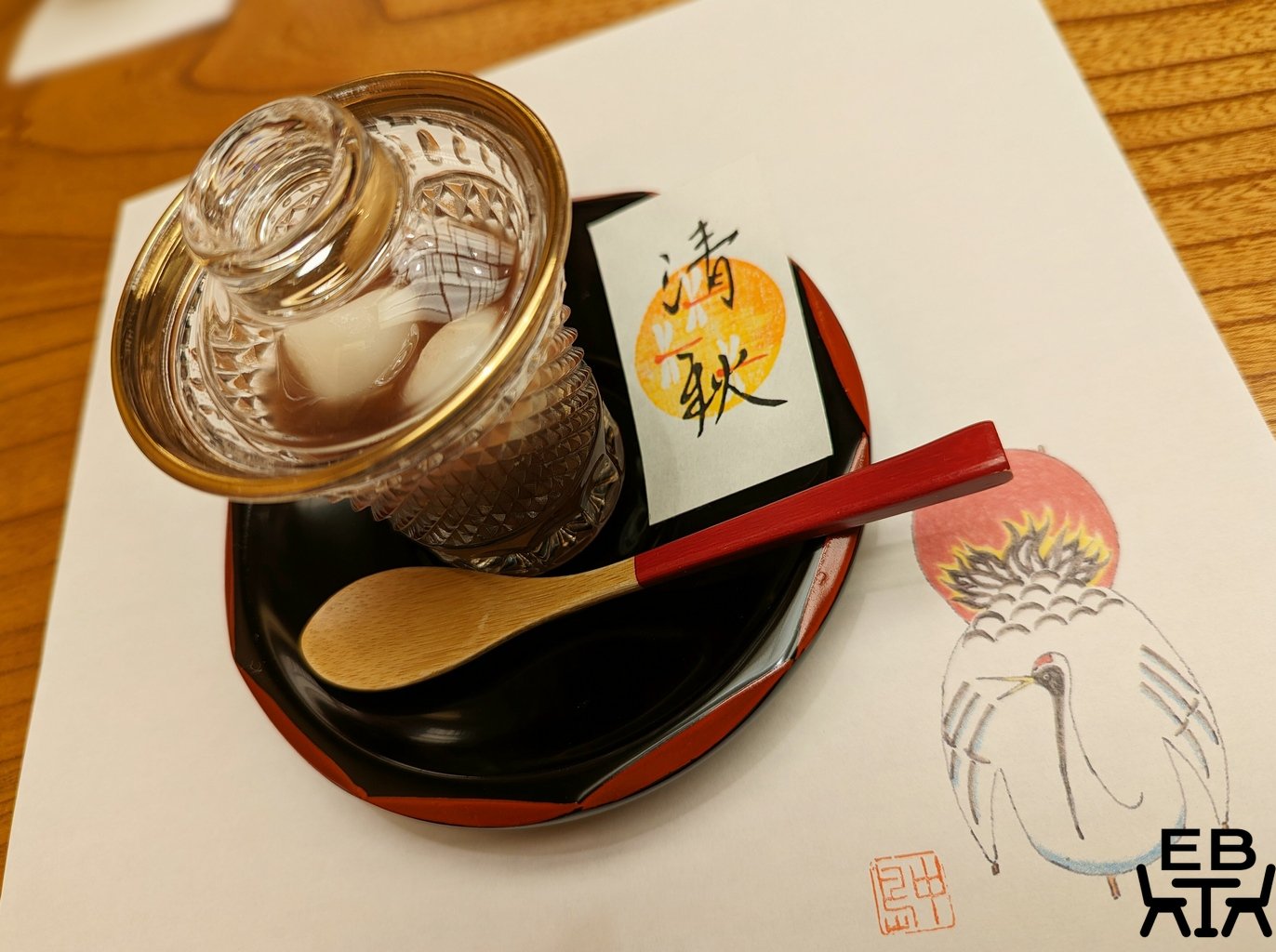
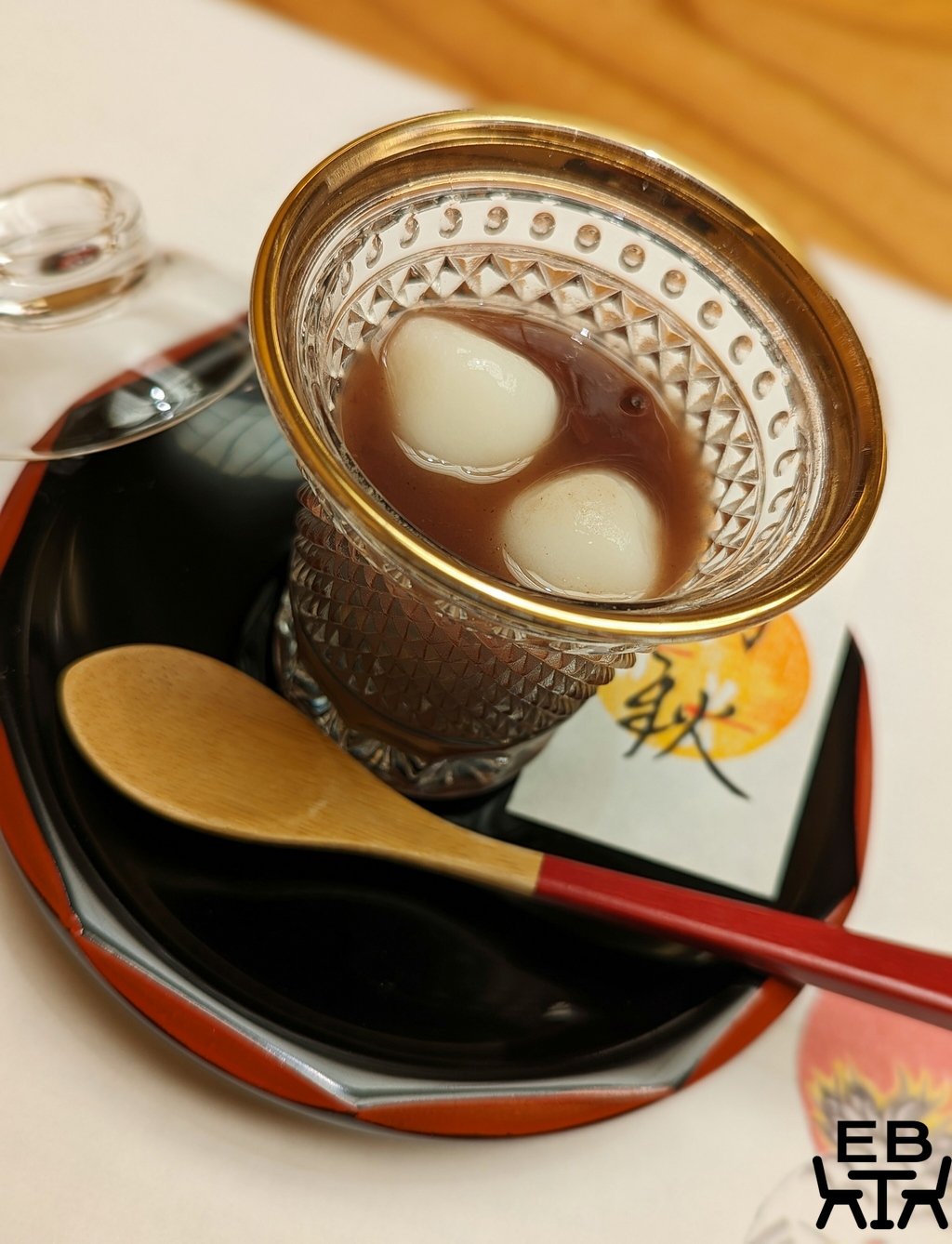
On the whole, we had quite a pleasant experience at Nakashima. We could see why it wasn’t Michelin starred any more – there were issues with pacing, with dishes sometimes being served while the previous dishes were still being eaten, and sometimes quite a lag before the next dish. There were a total of 12 diners at dinner, but it seemed that everyone was served their dishes at the same time due to there only being one person cooking. There also wasn’t quite the precision or keen attention to detail we had noted at other starred eateries. Some of the dishes also weren’t really great (like the Rice course).
There were elements of genius though, like the Eel dish, and the Lotus root dish. Those were brilliant dishes that wowed us. It also felt like the place had heart. Staff were warm, and tried to explain things to us despite the language barrier. We enjoyed the meal more than we had at Mingles (another Michelin starred restaurant that we never got around to documenting). If you are in Hiroshima and after a traditional cuisine experience, add this to your list (but book ahead).

Scores:
Food: 3/4
Setting: 1/2
Service: 1.5/2
Total: 5.5/8
Price point: ¥20,790 per person for the kaiseki course – that is the only option. (When we visited, $1 AUD was about ¥96.)
Value: Not bad, considering what you get.
Details:
Address: Japan, 〒730-0004 Hiroshima, Naka Ward, Higashihakushimacho, 10-4, Tohaku ビル
Phone: +81 82-225-3977
Website: Japanese Cuisine Nakashima

